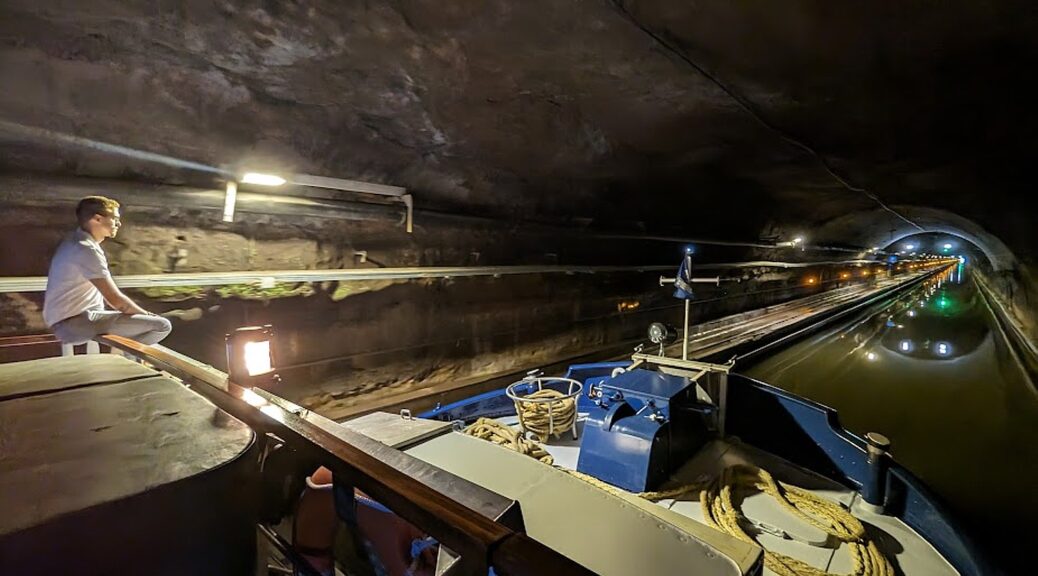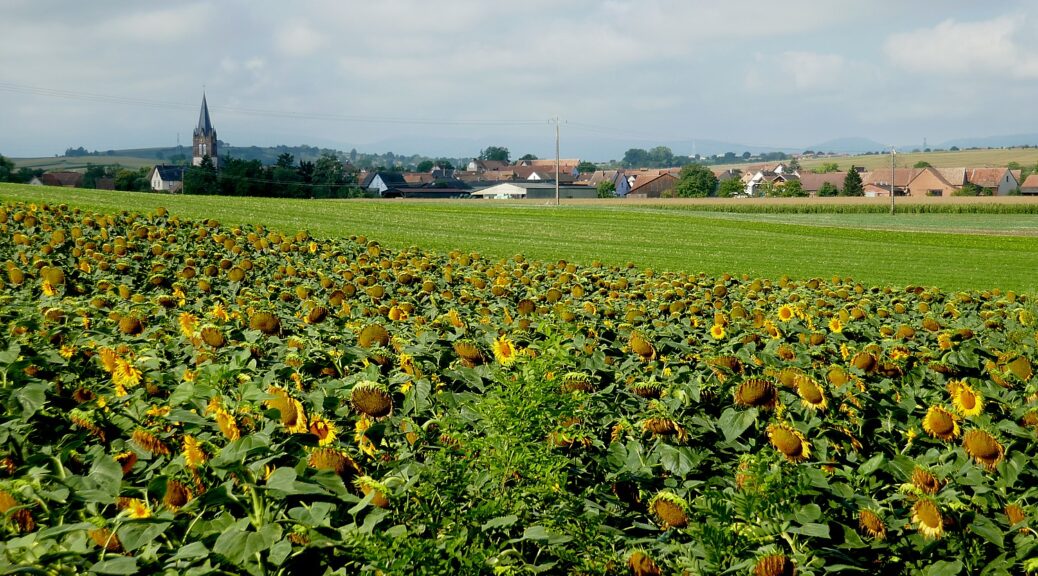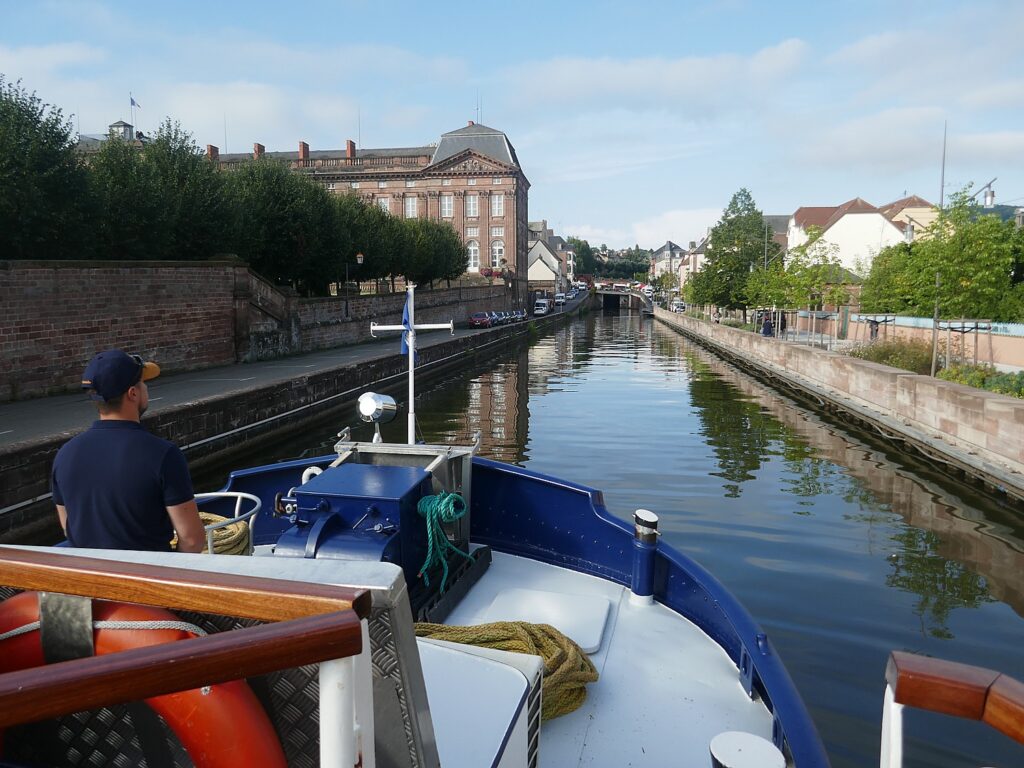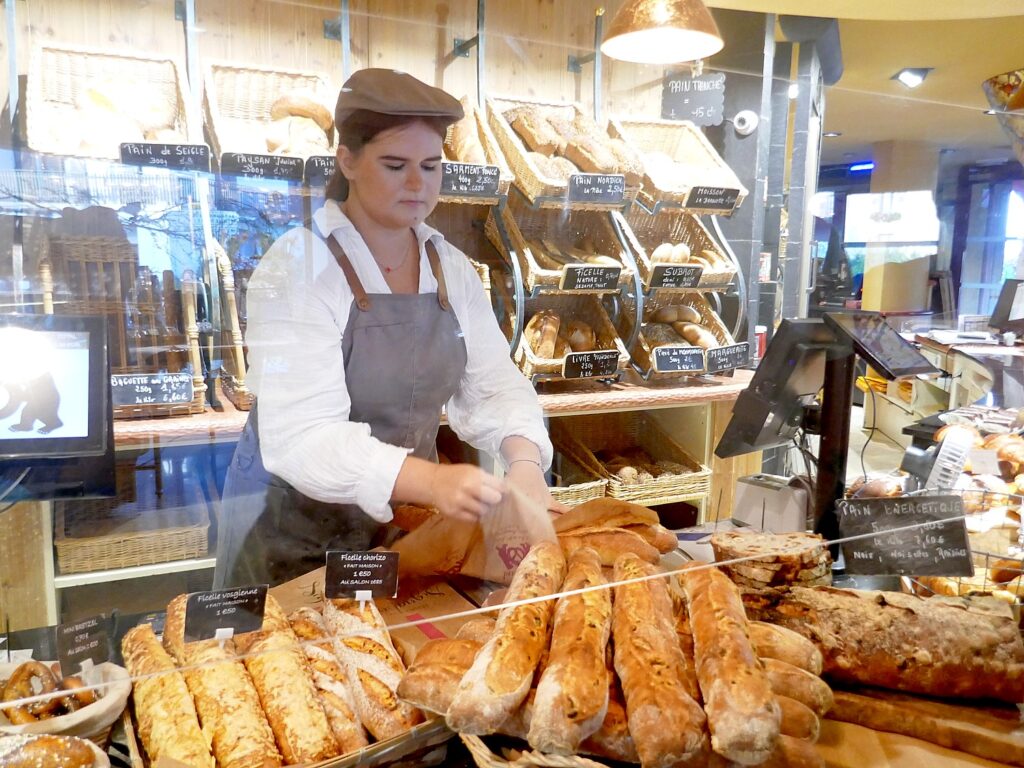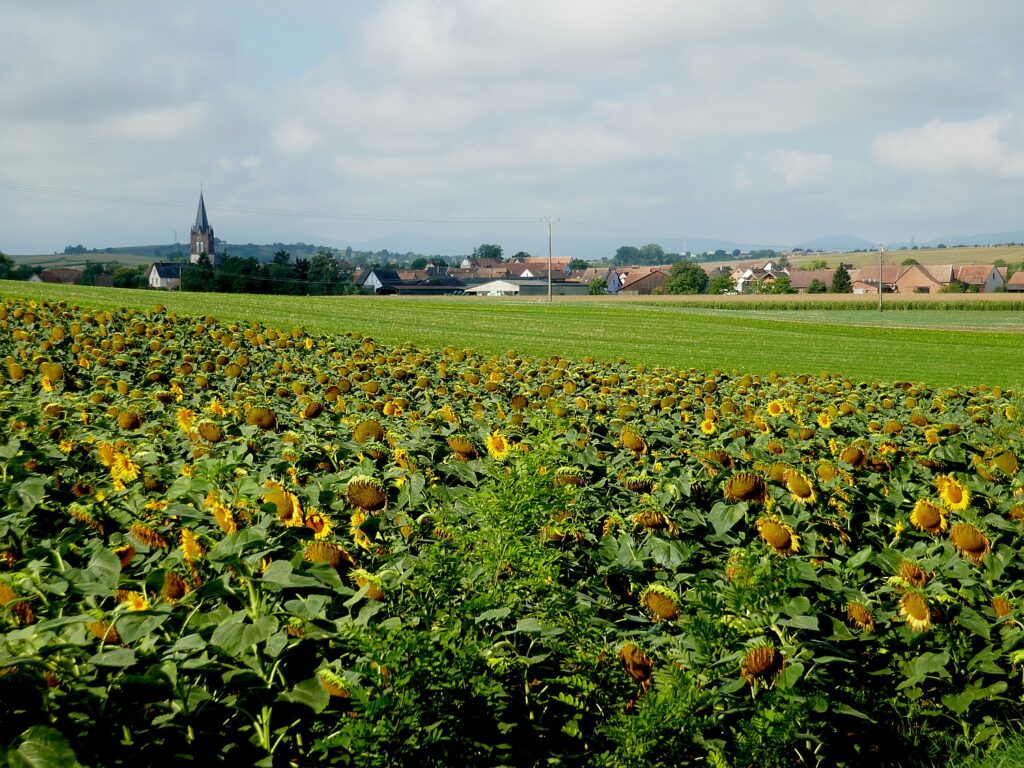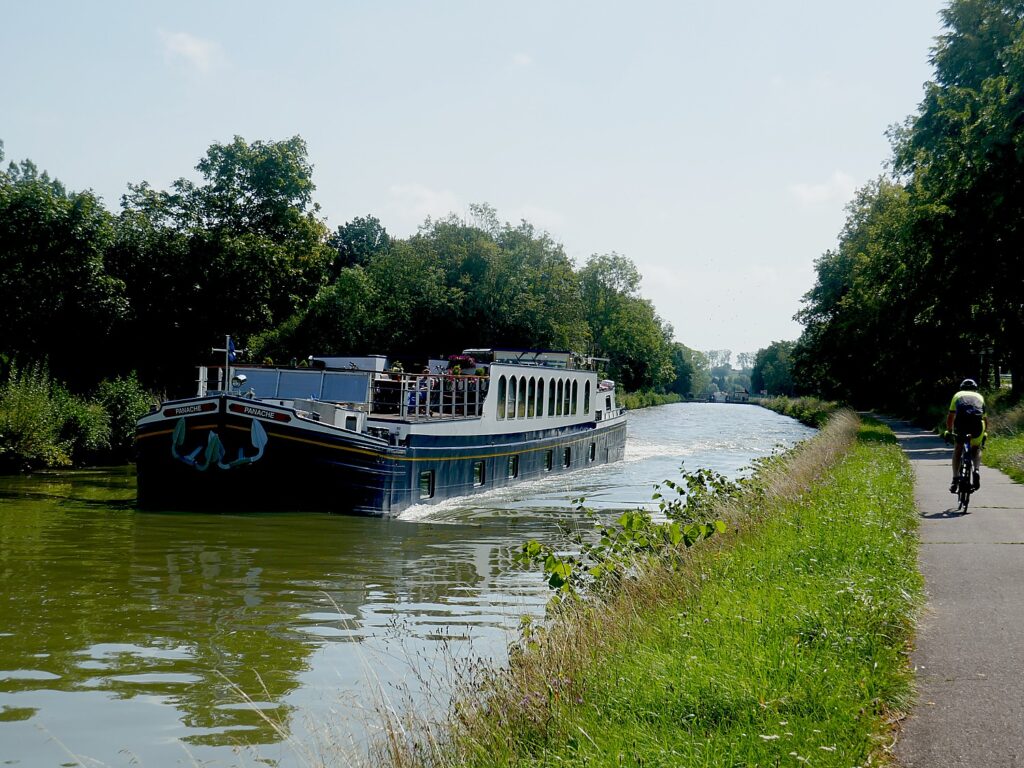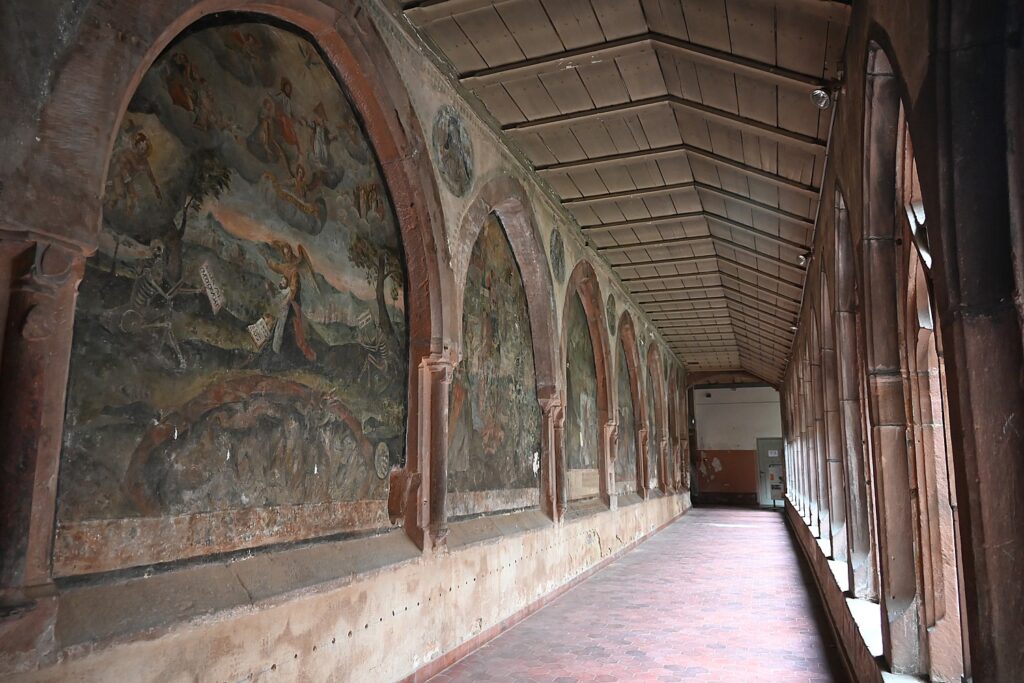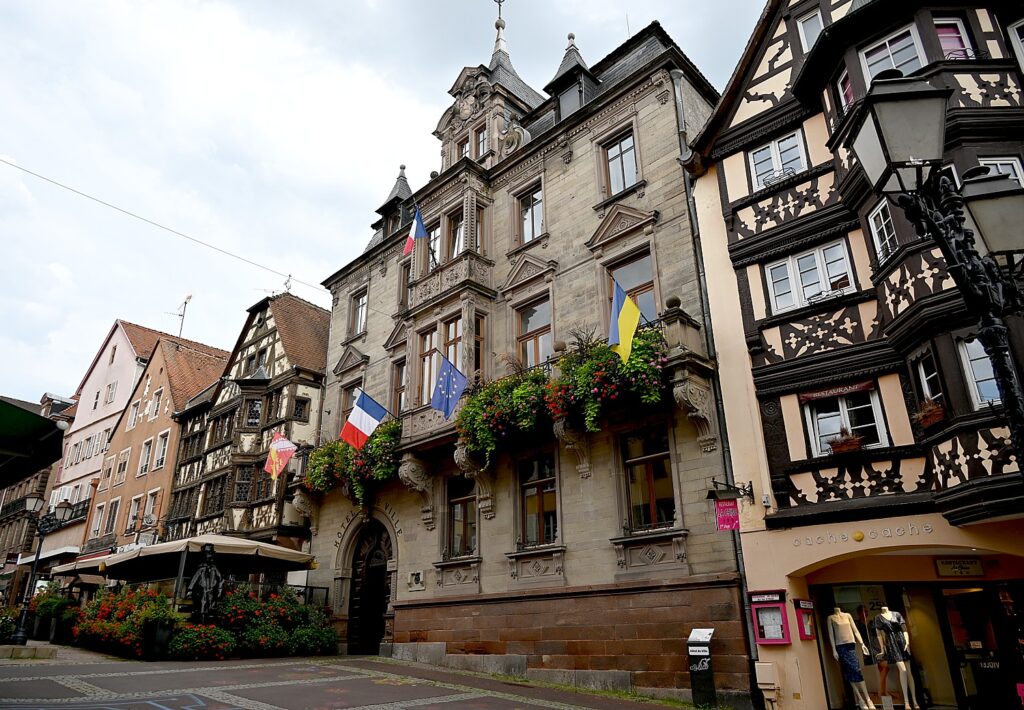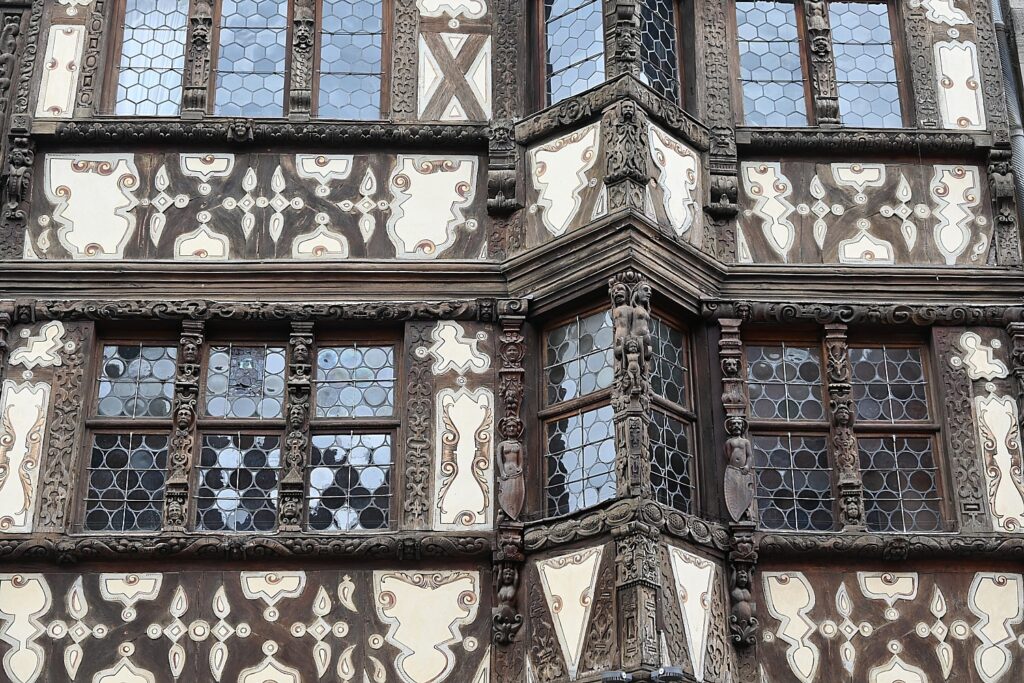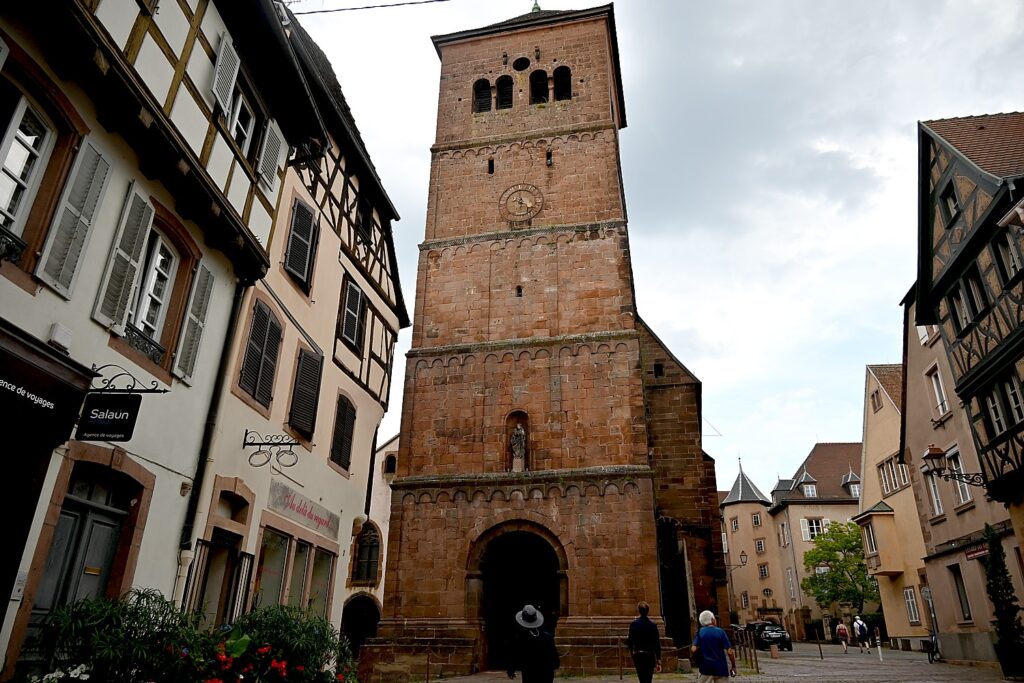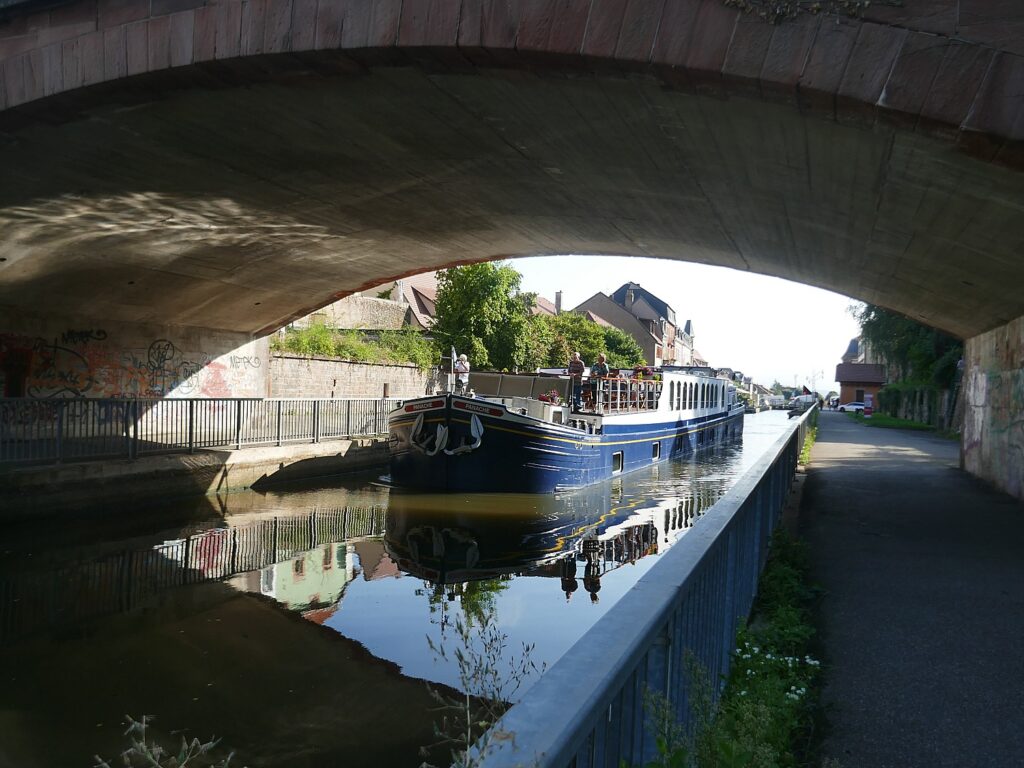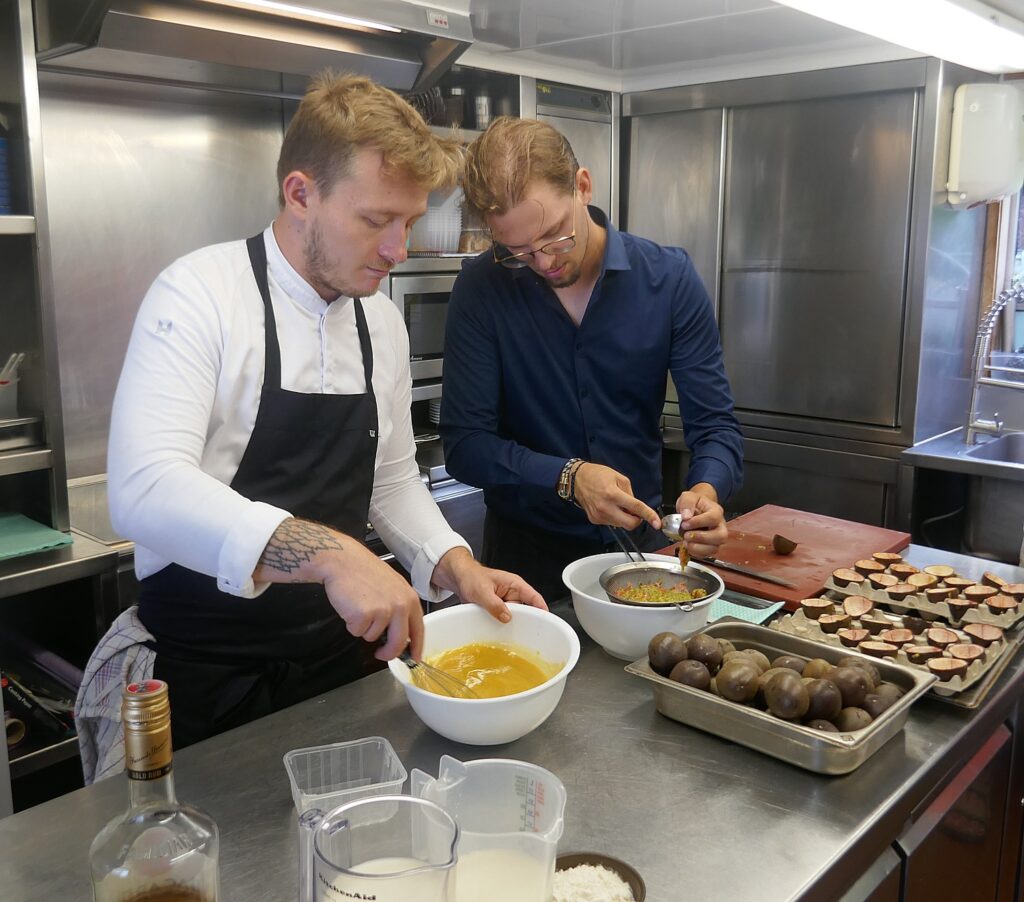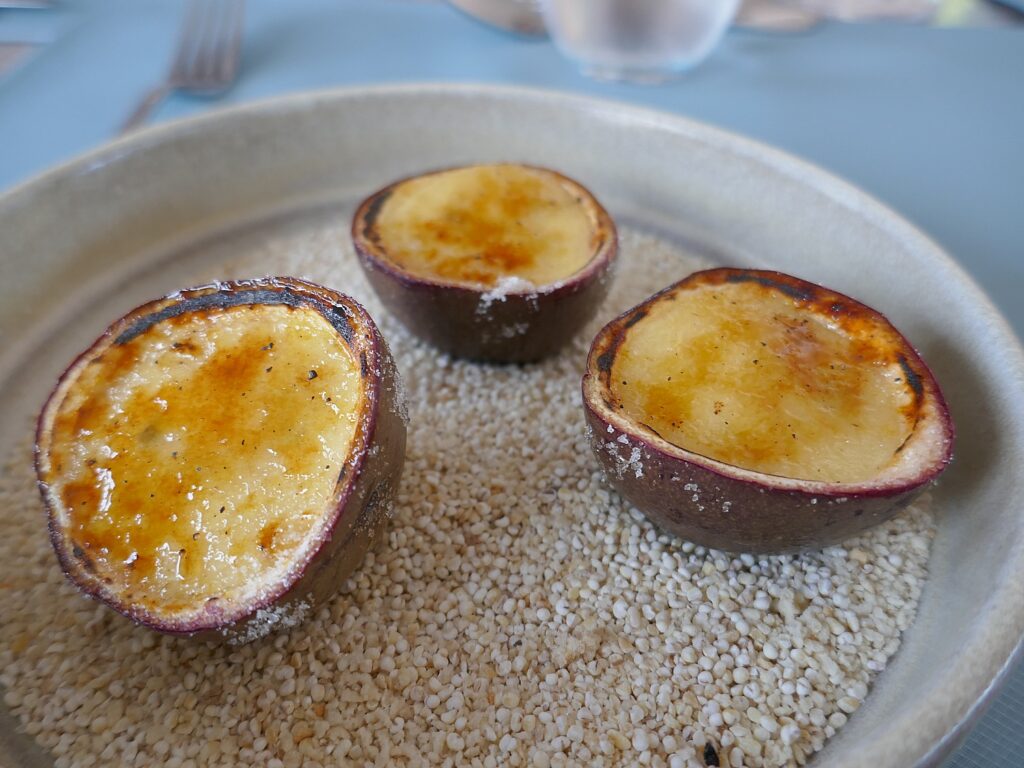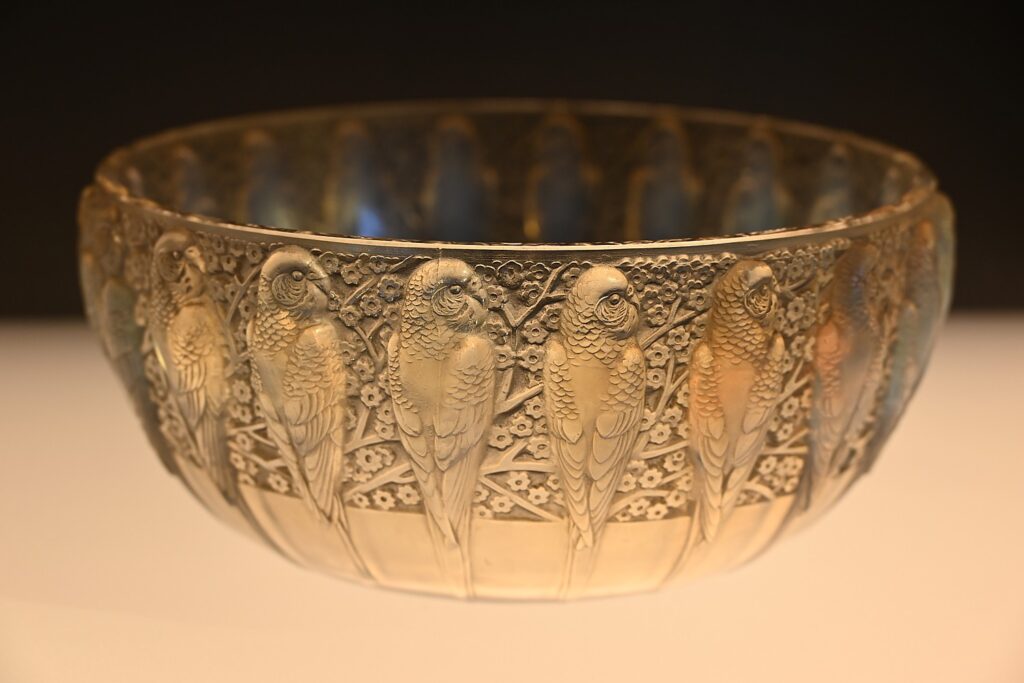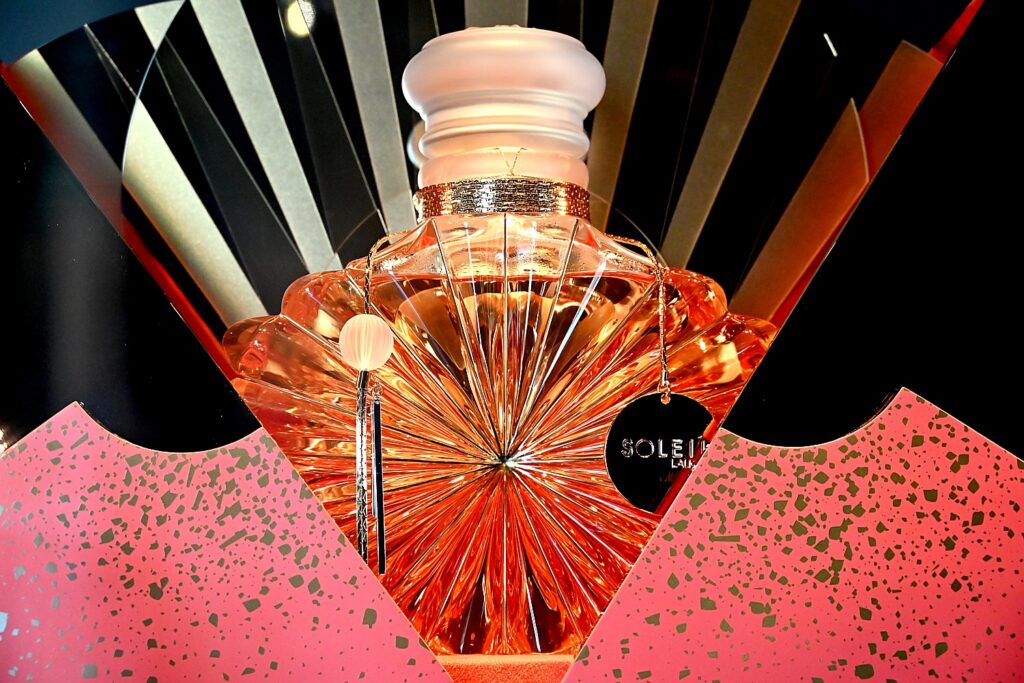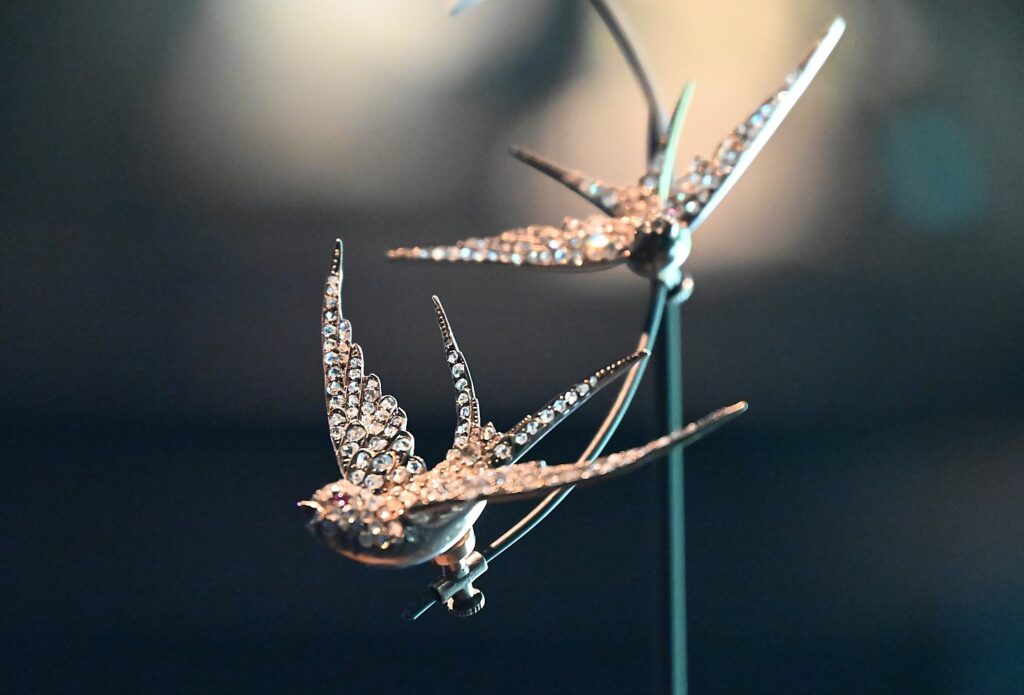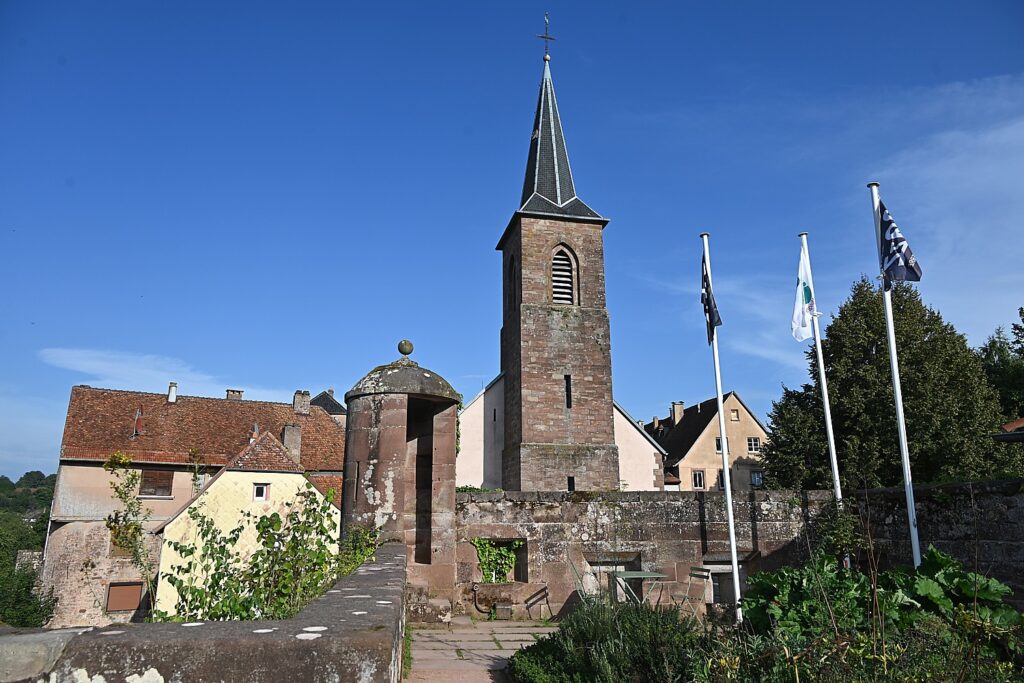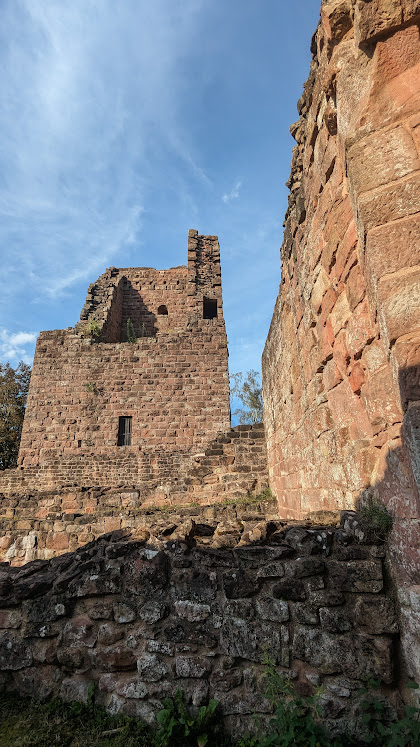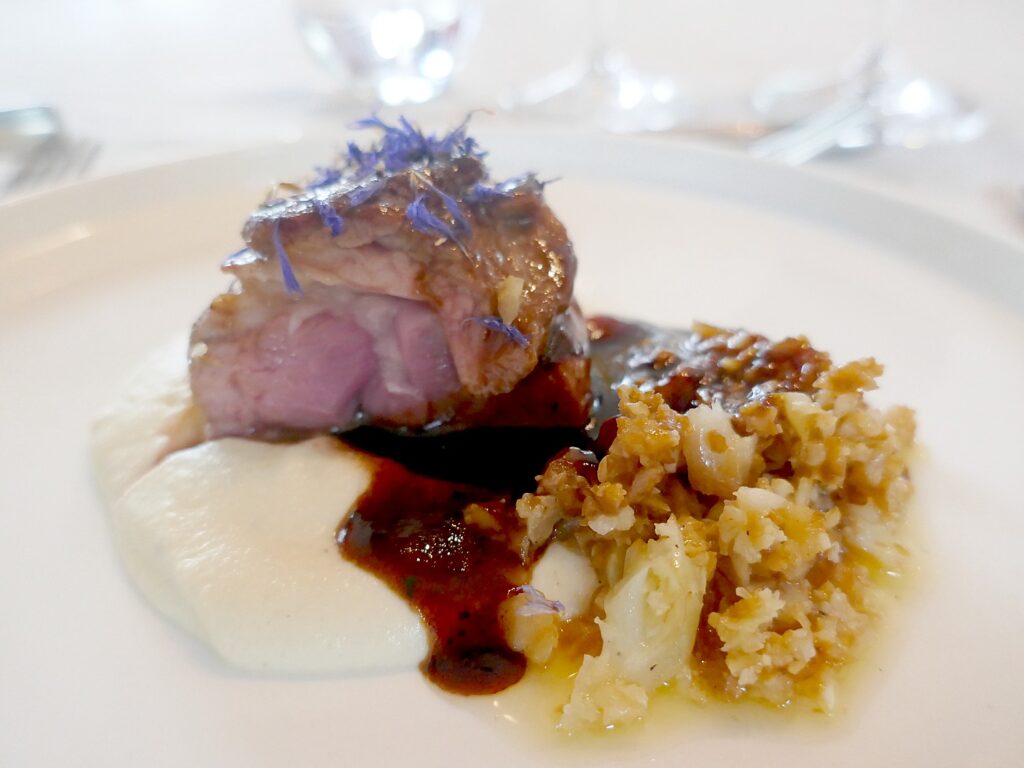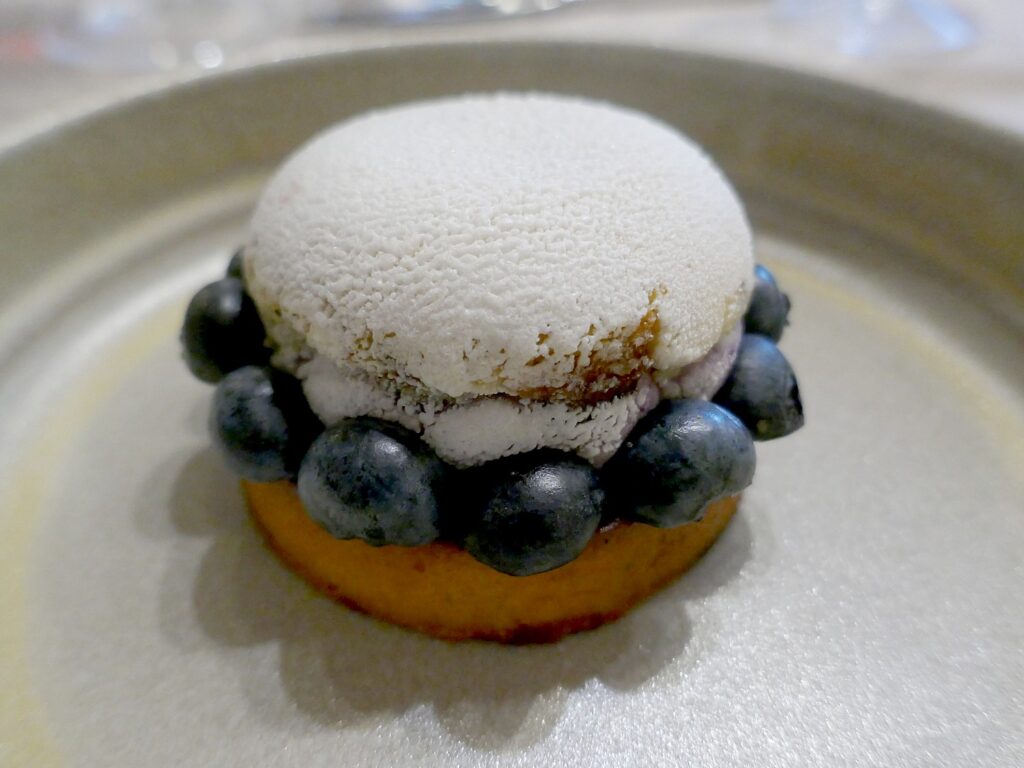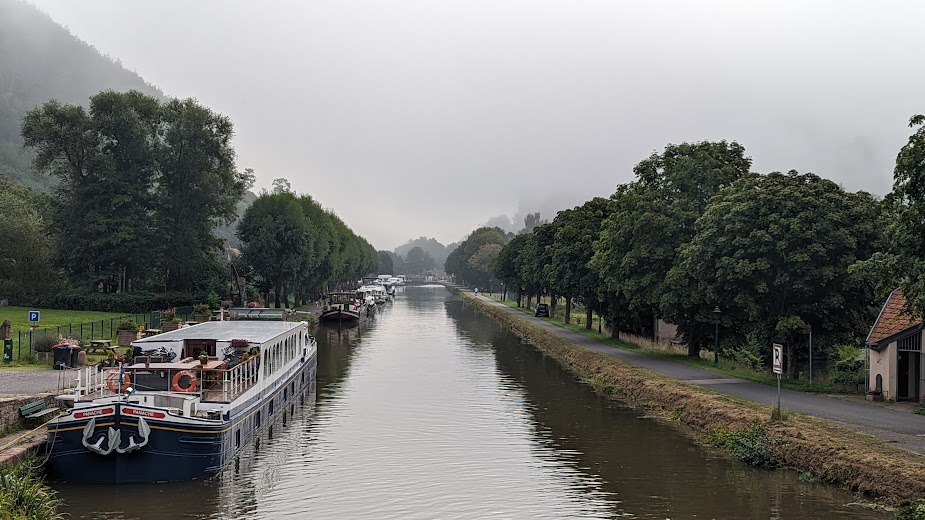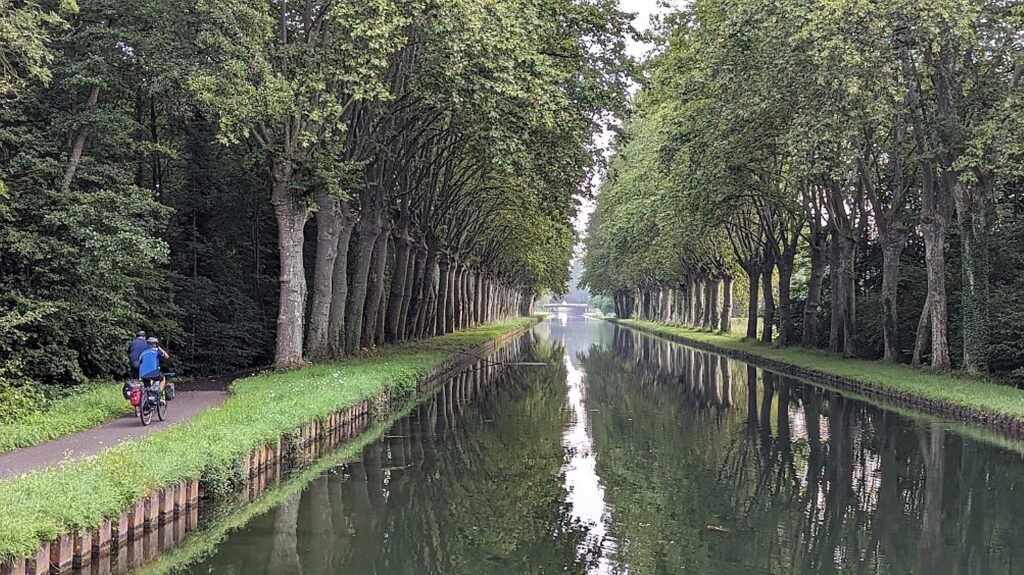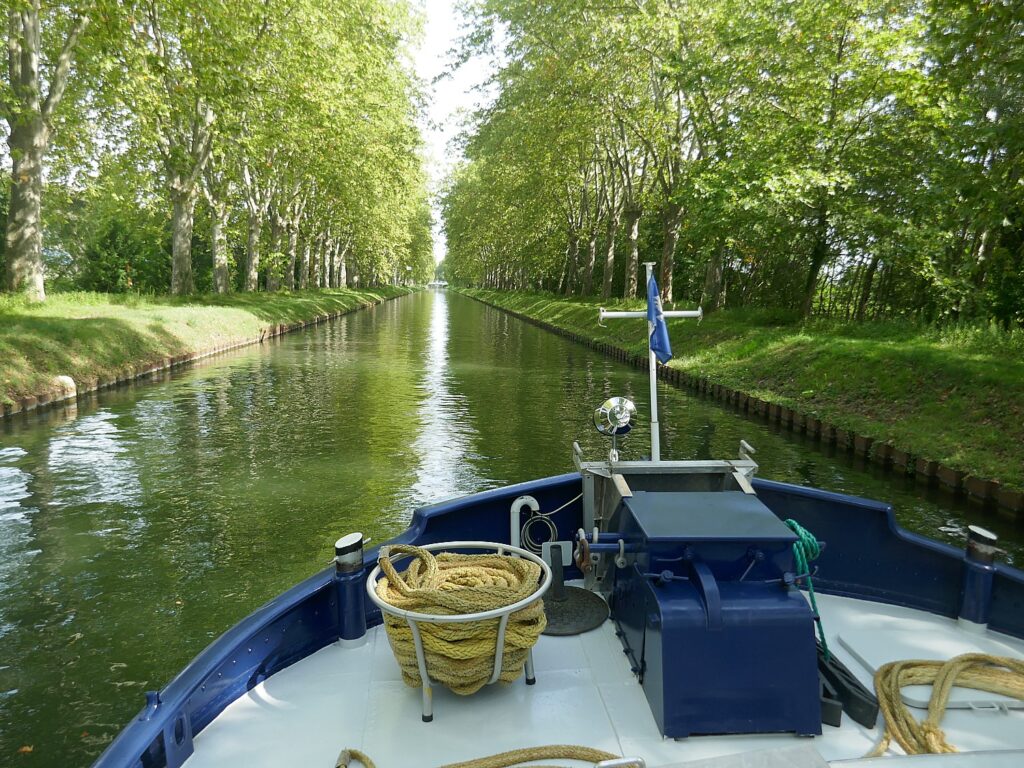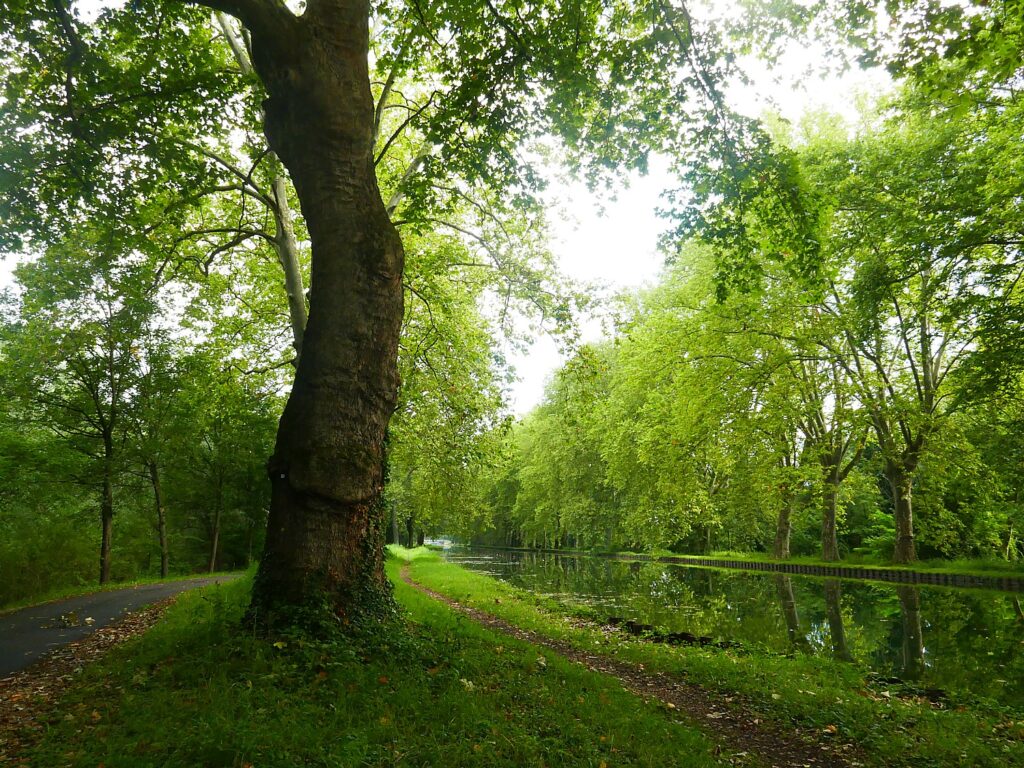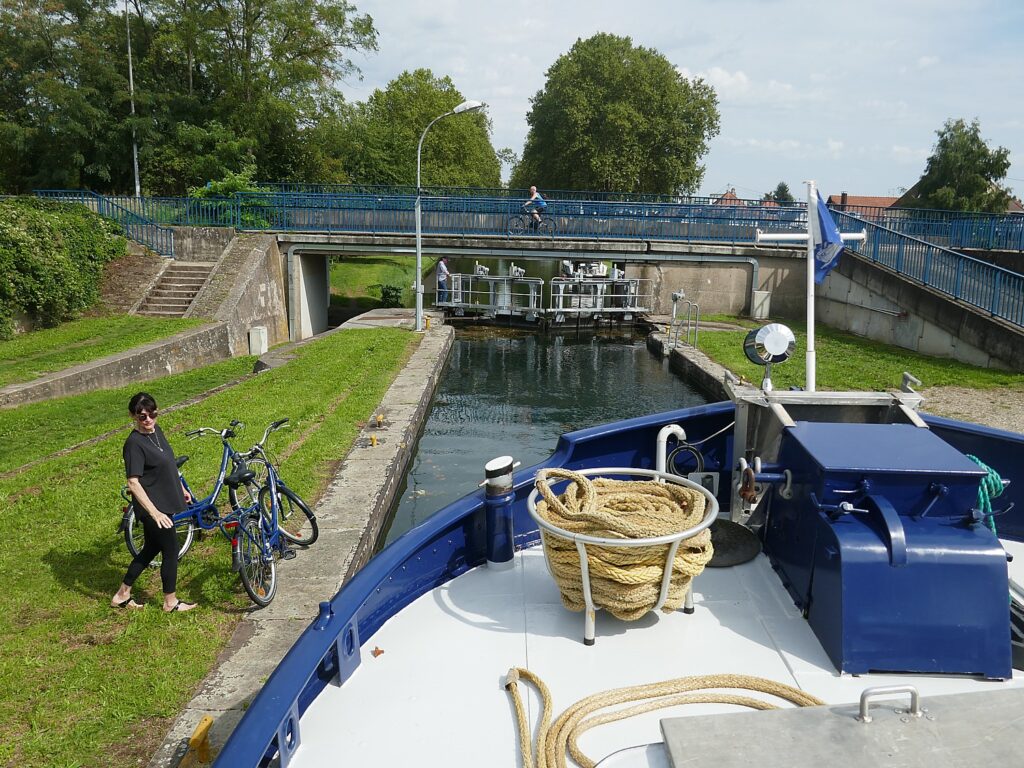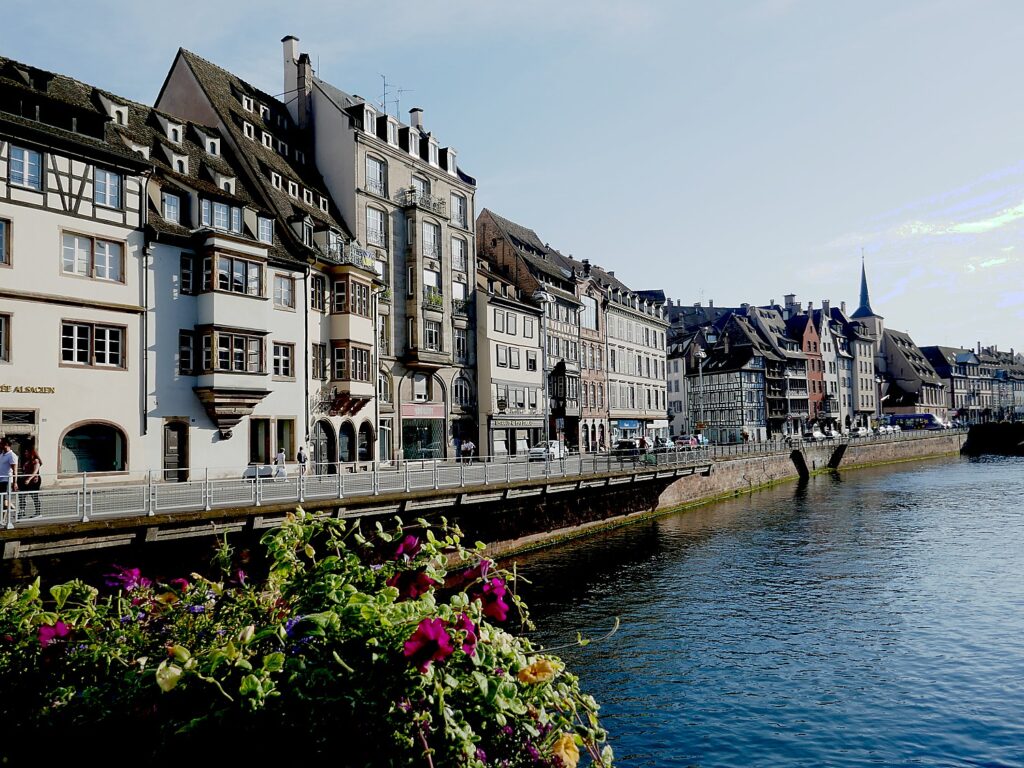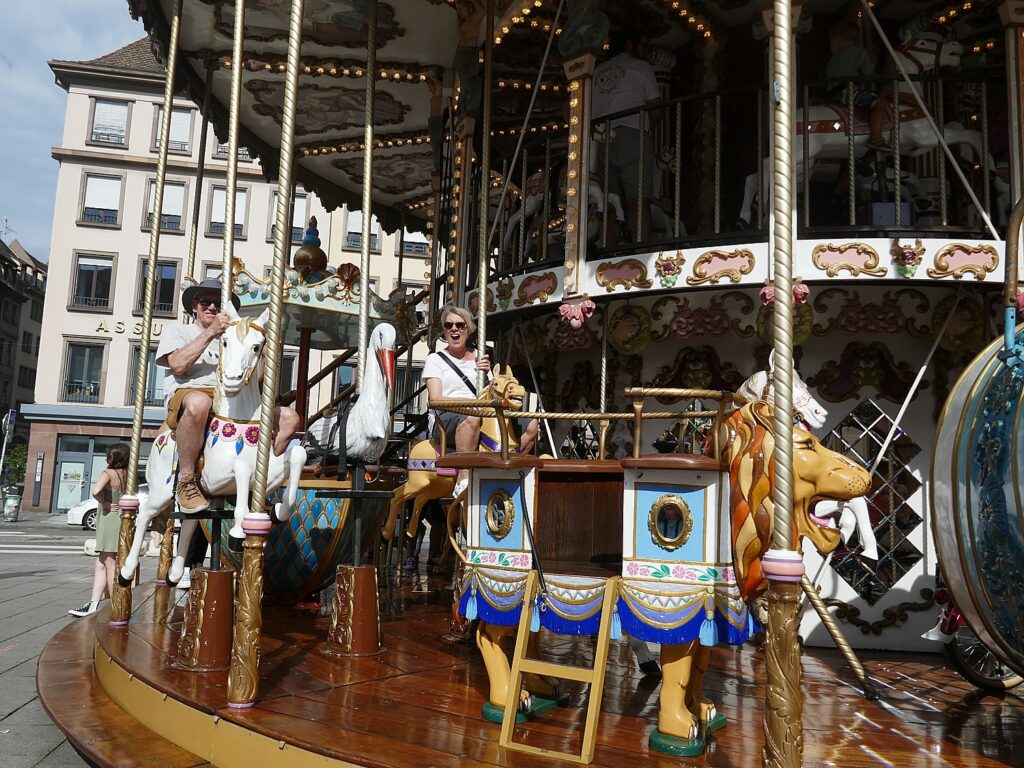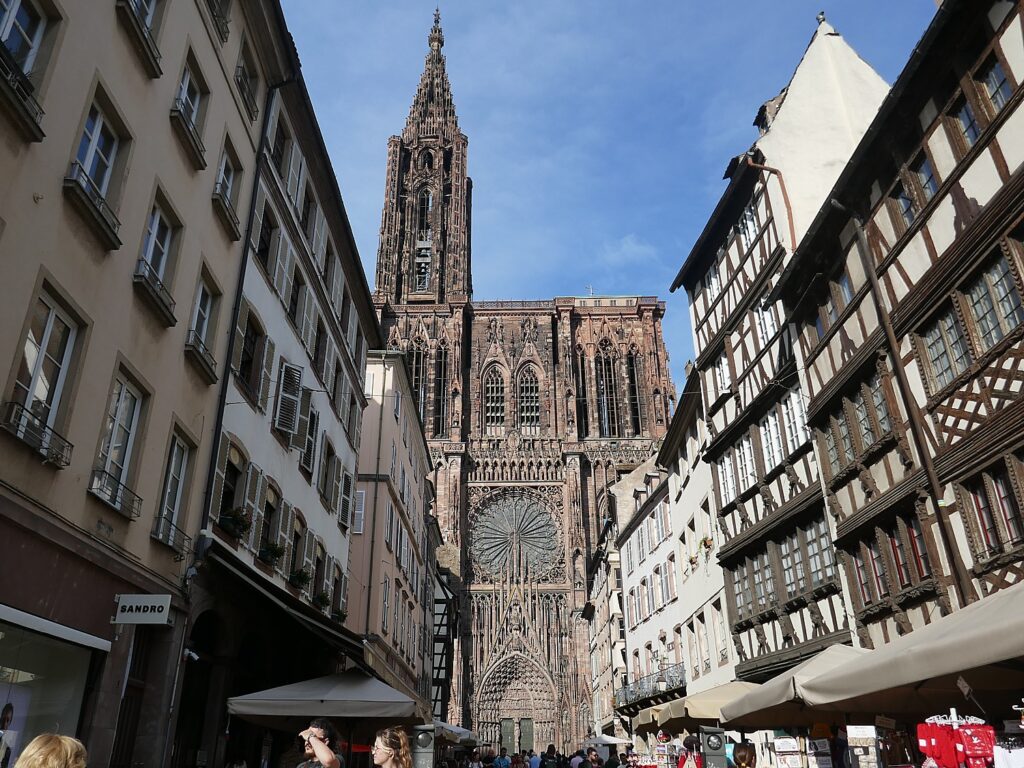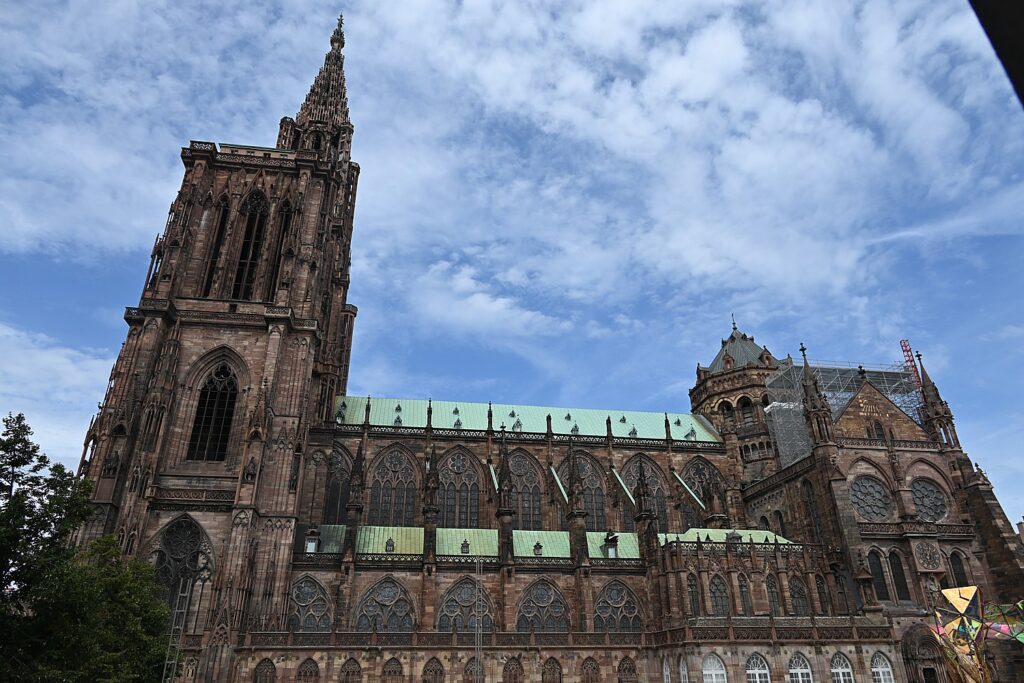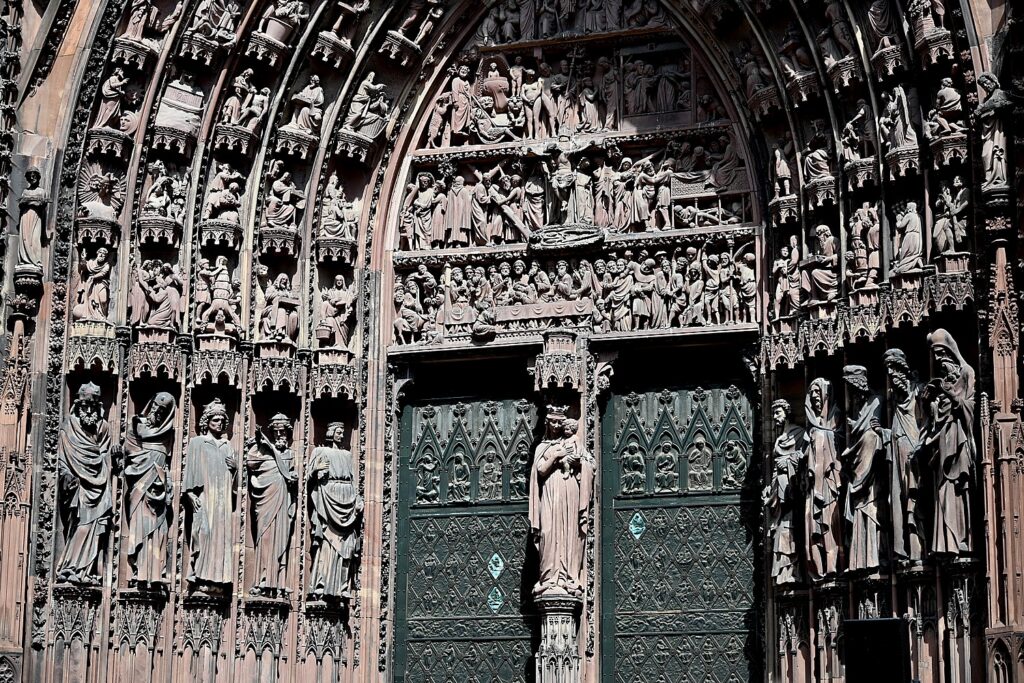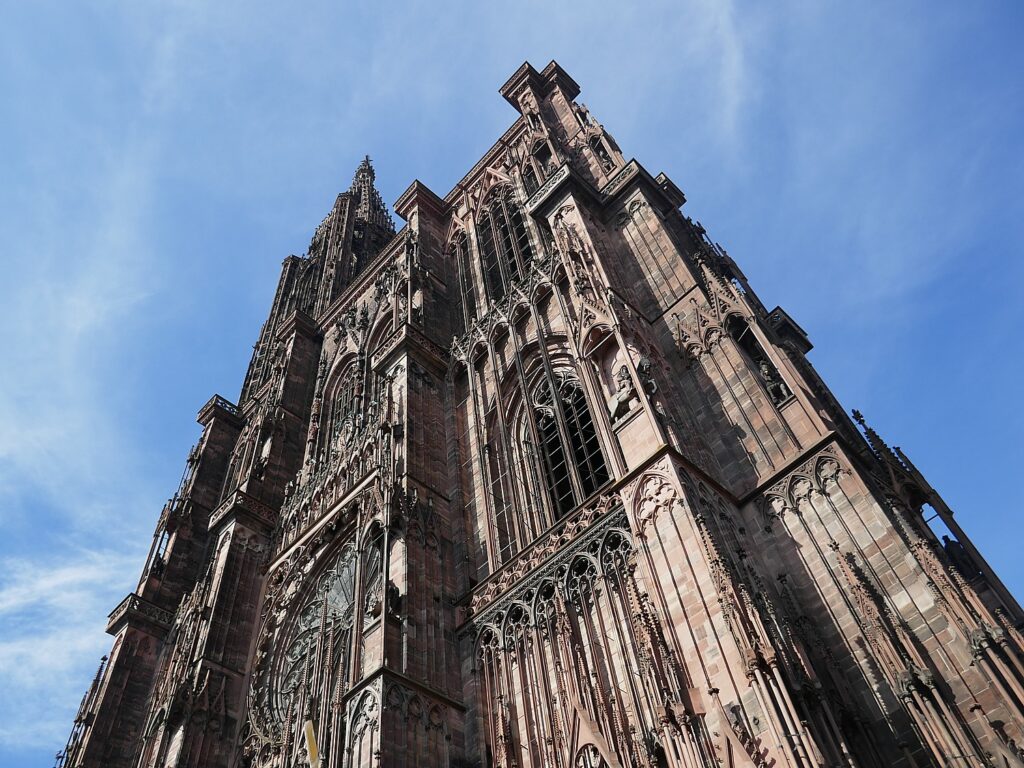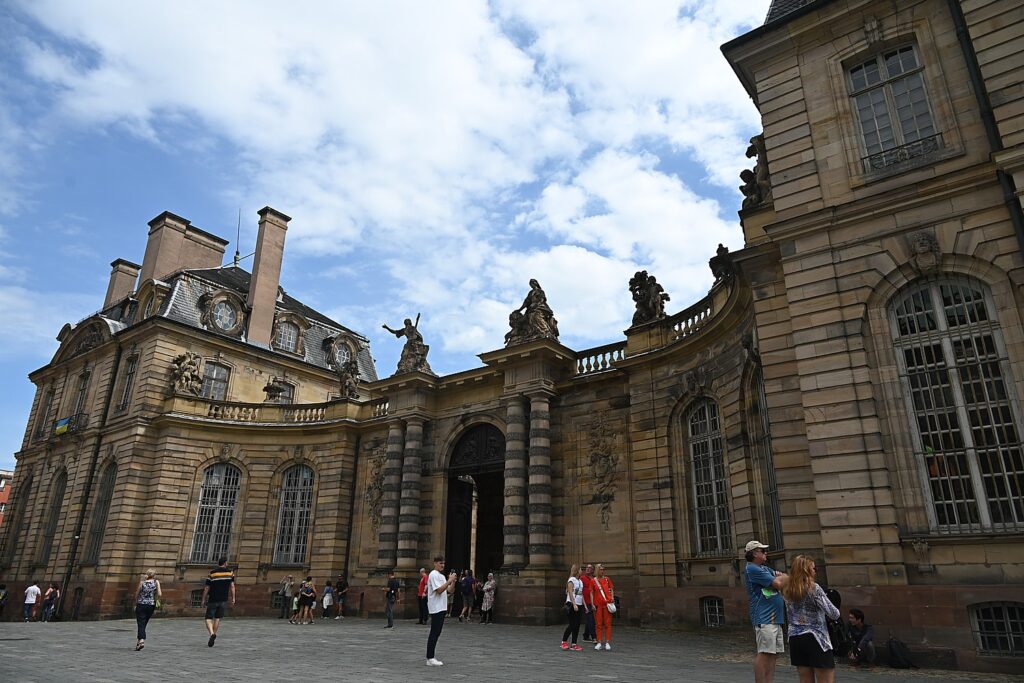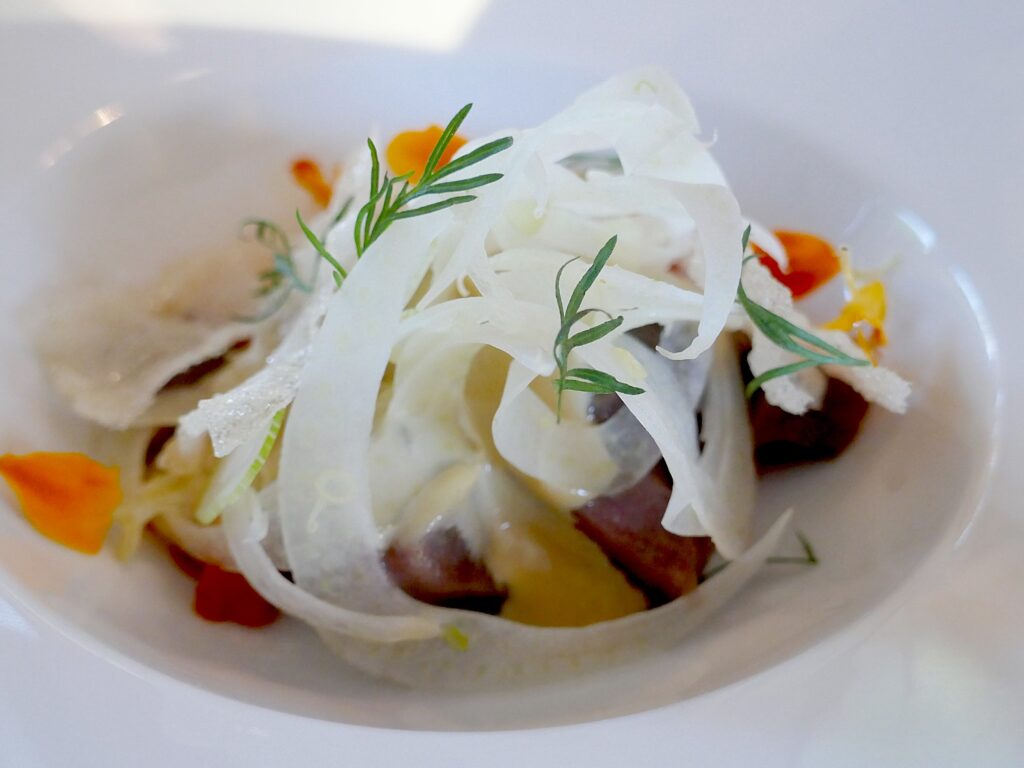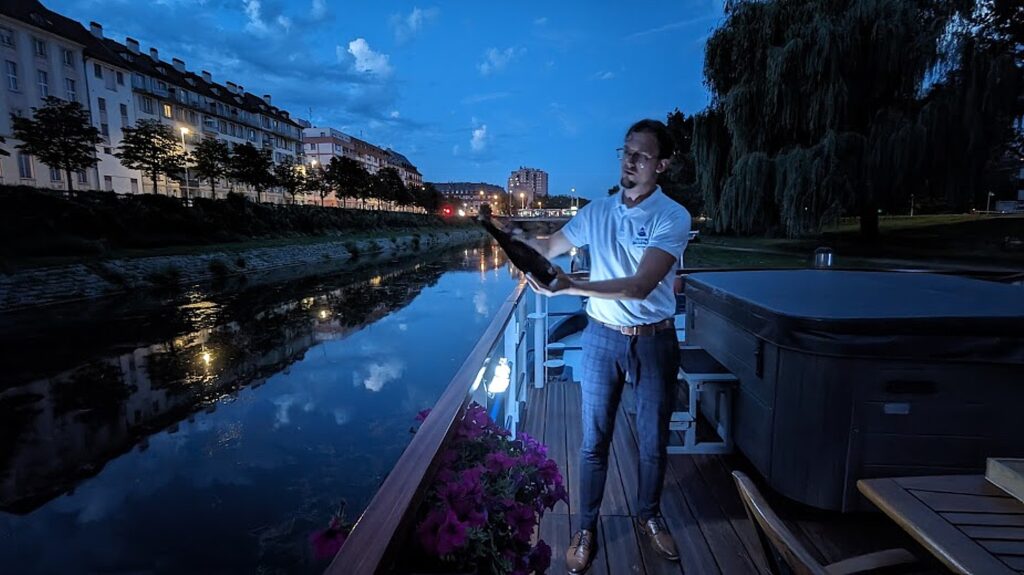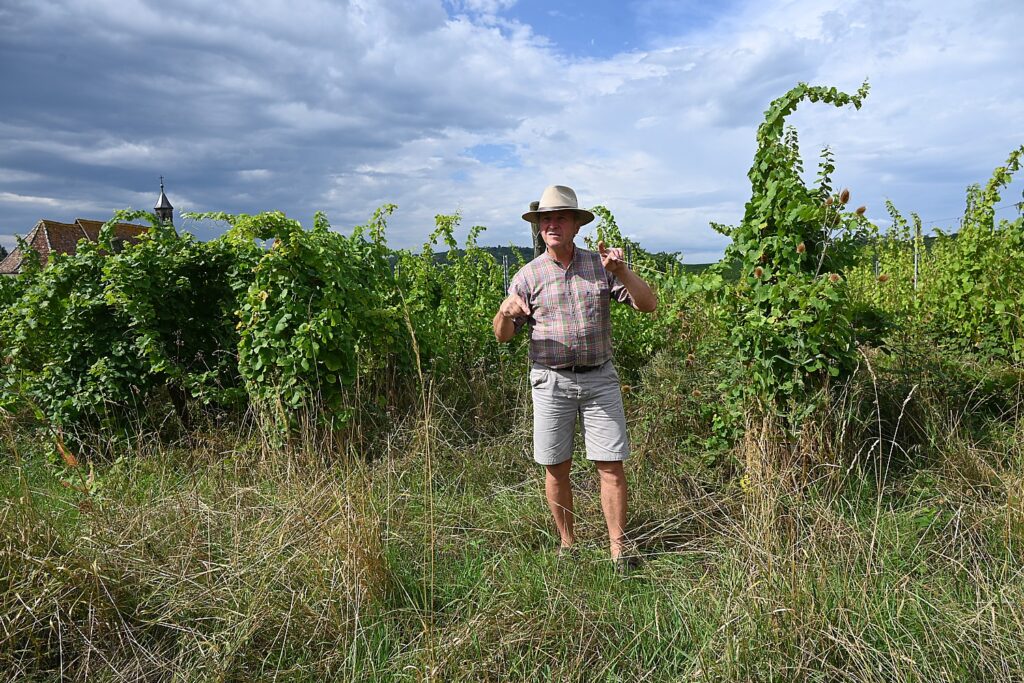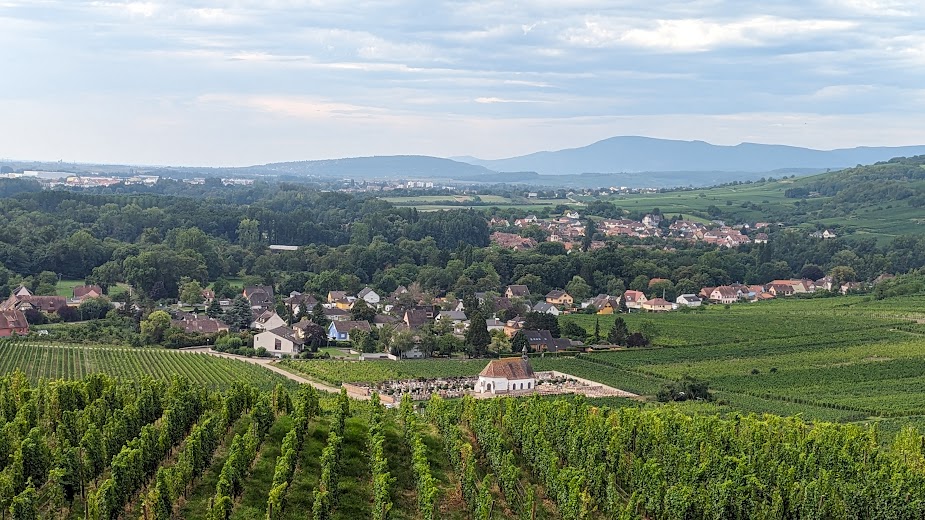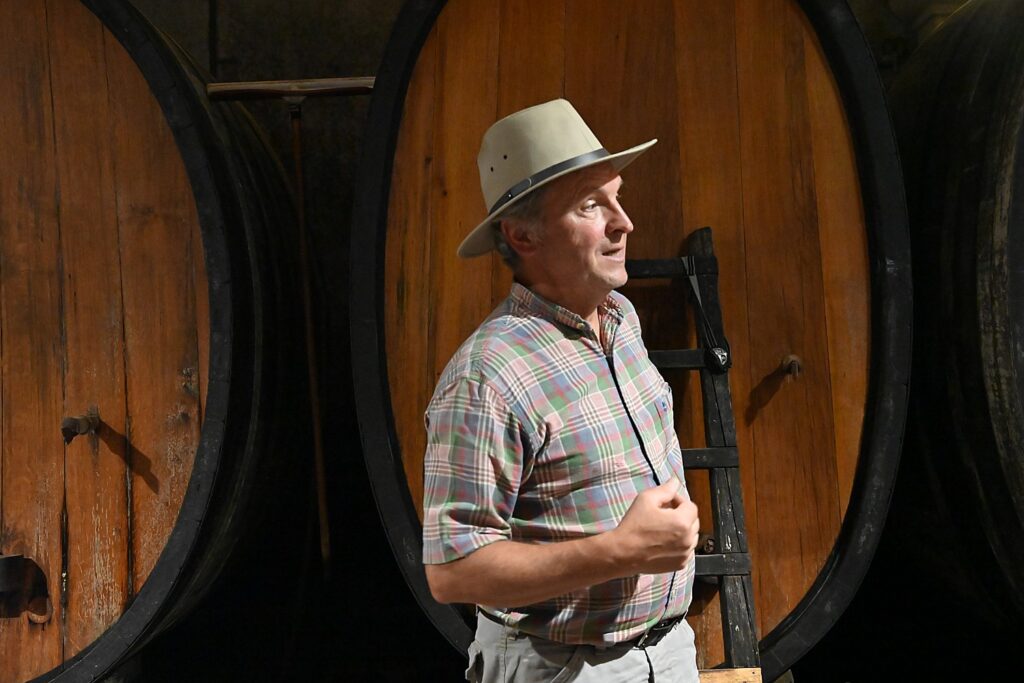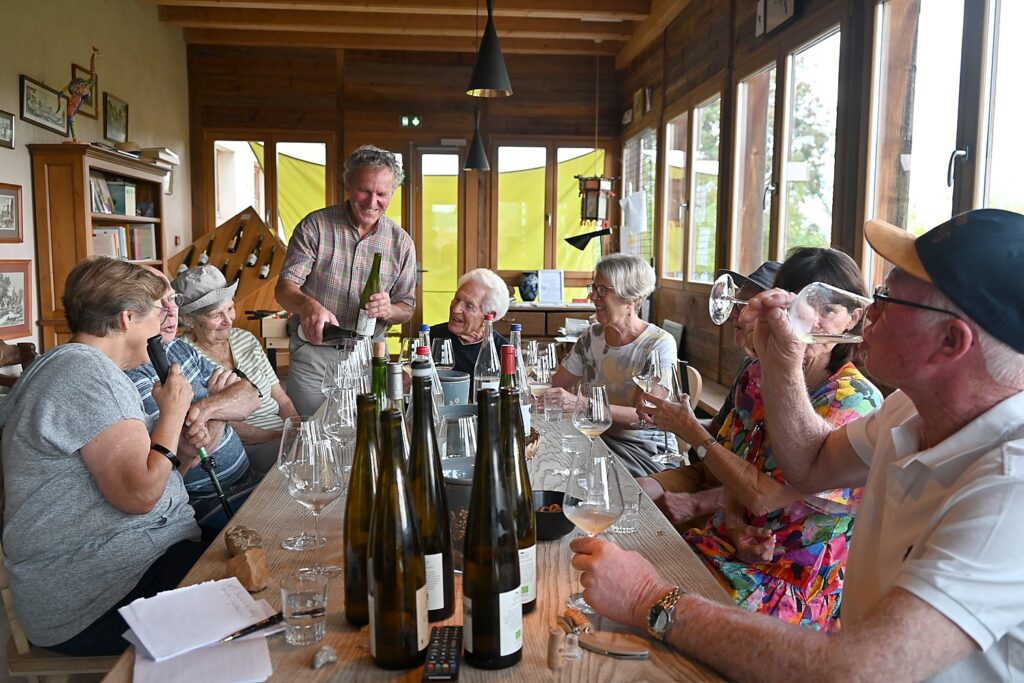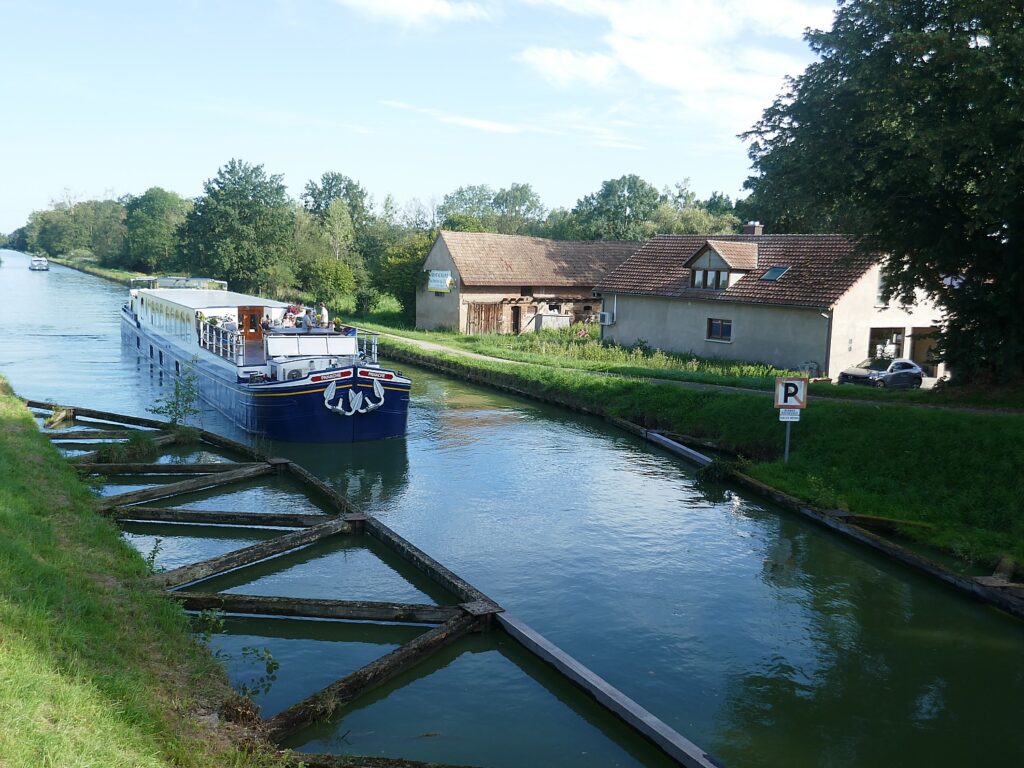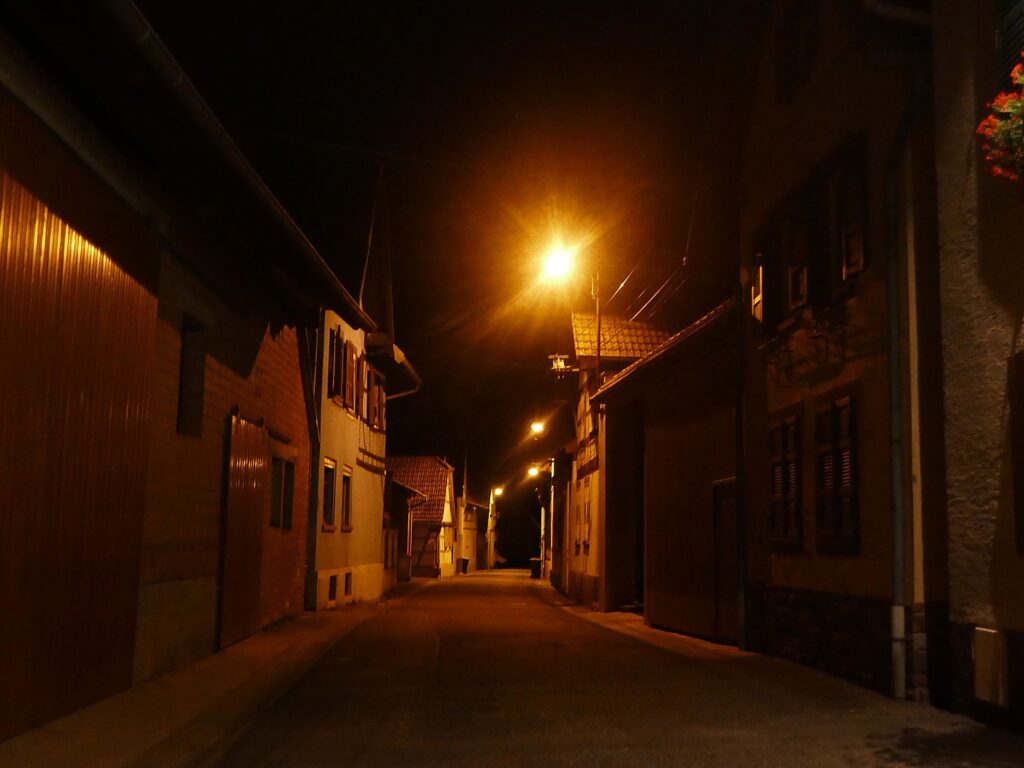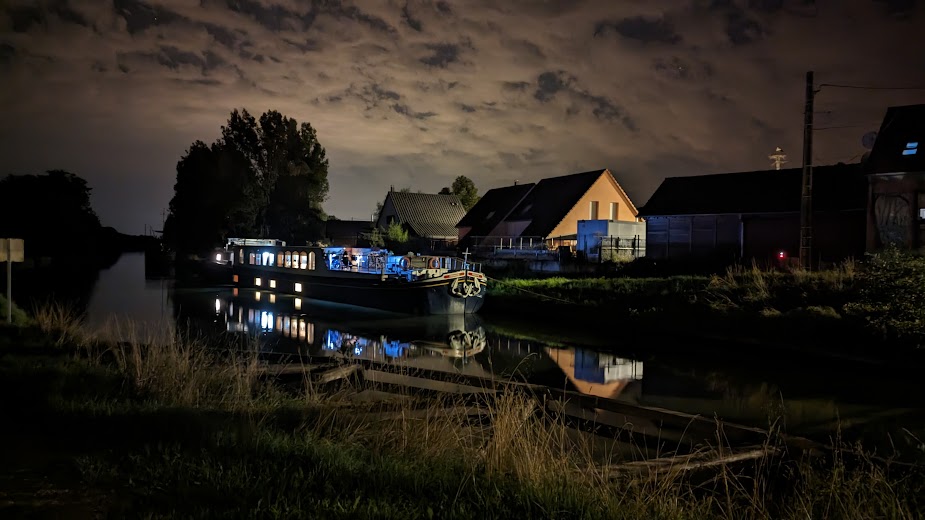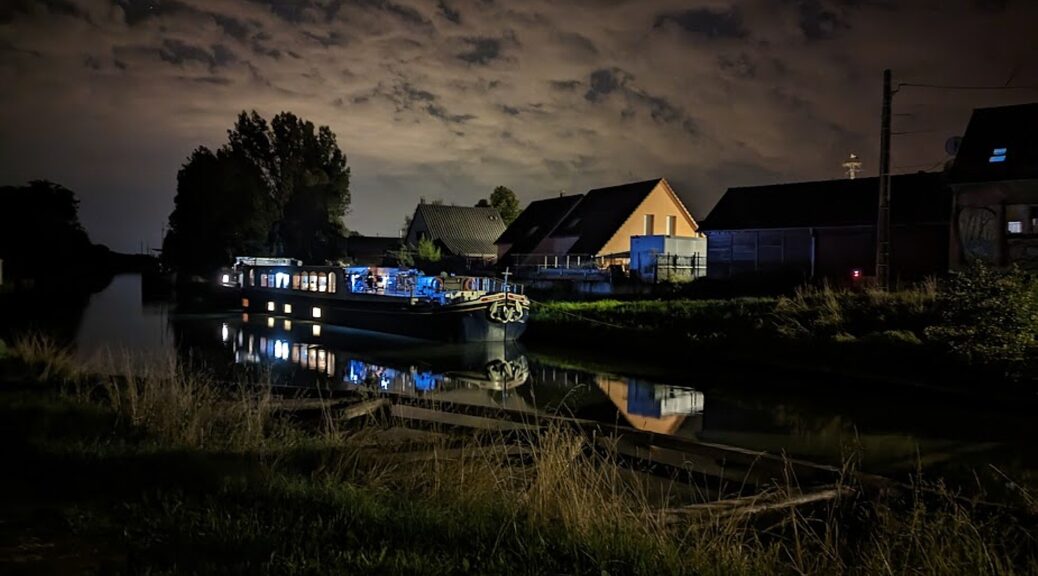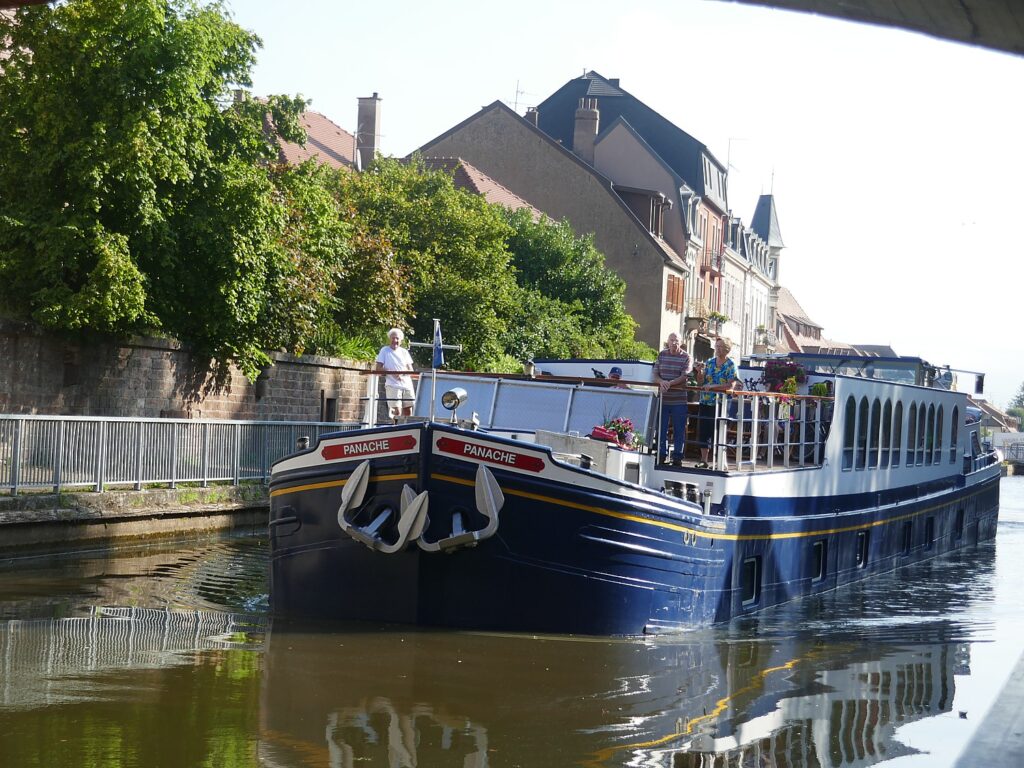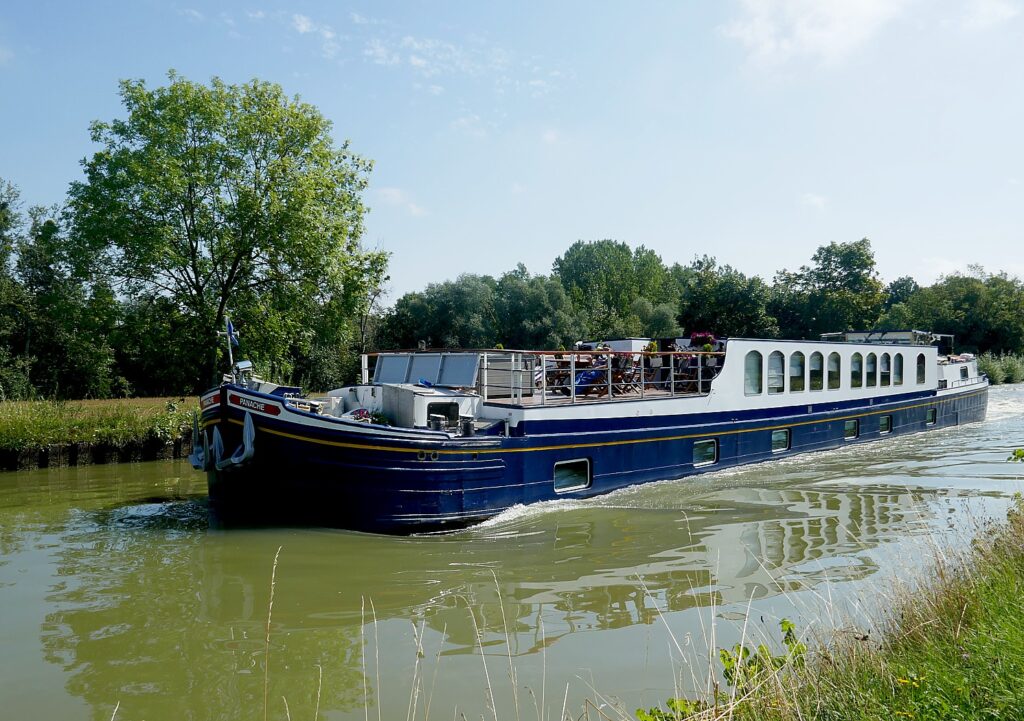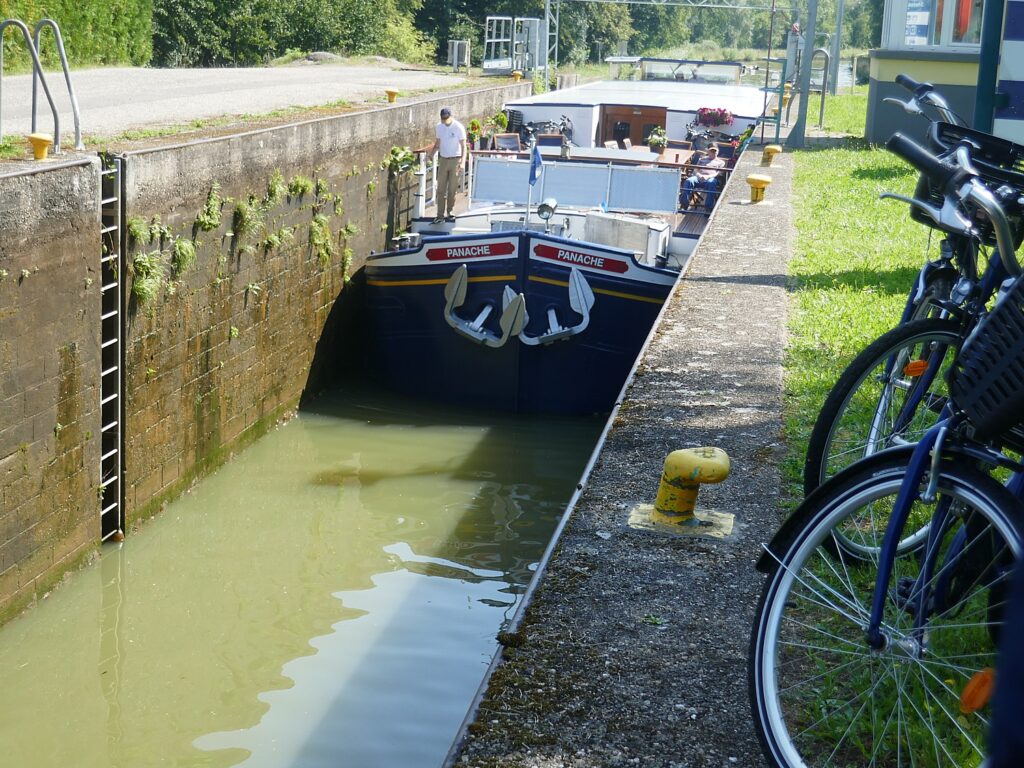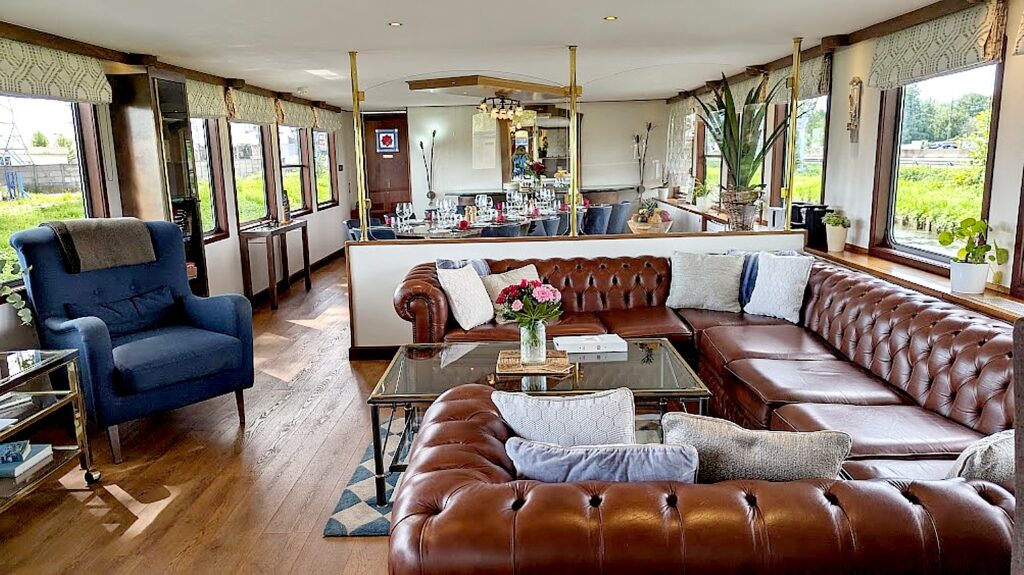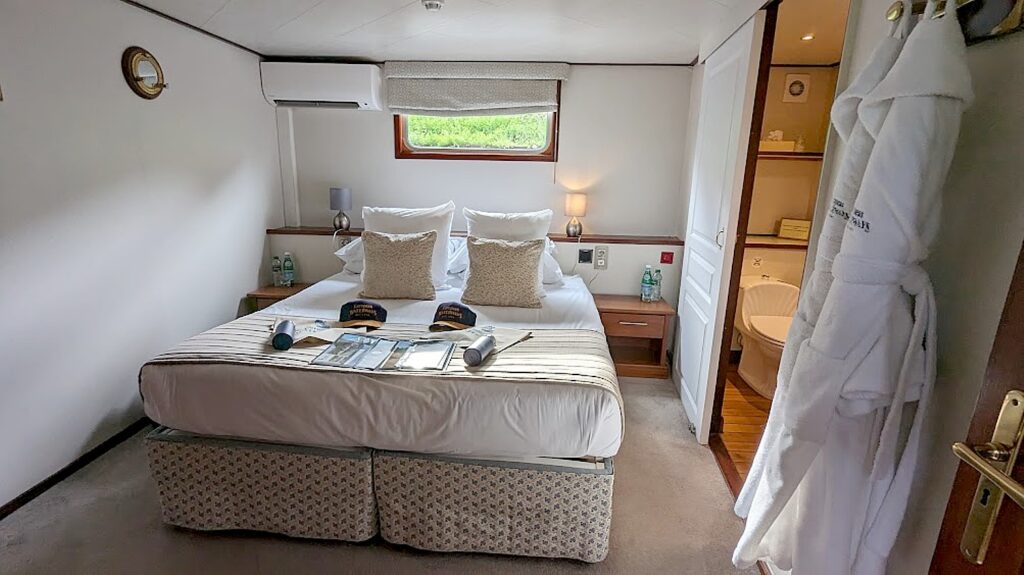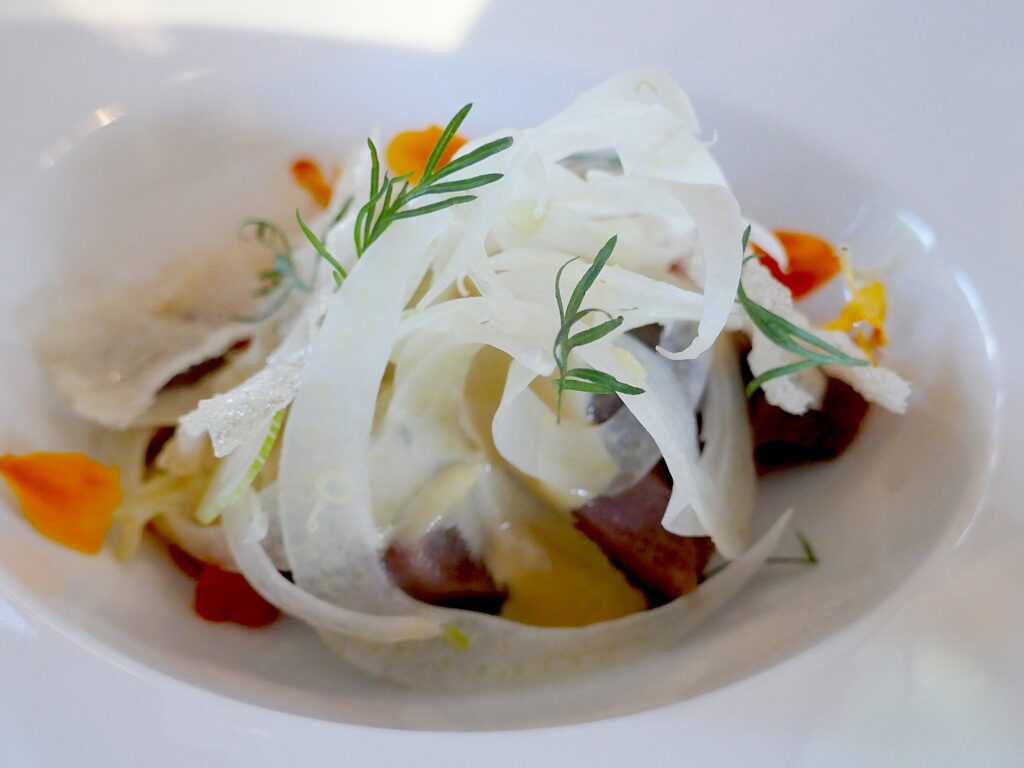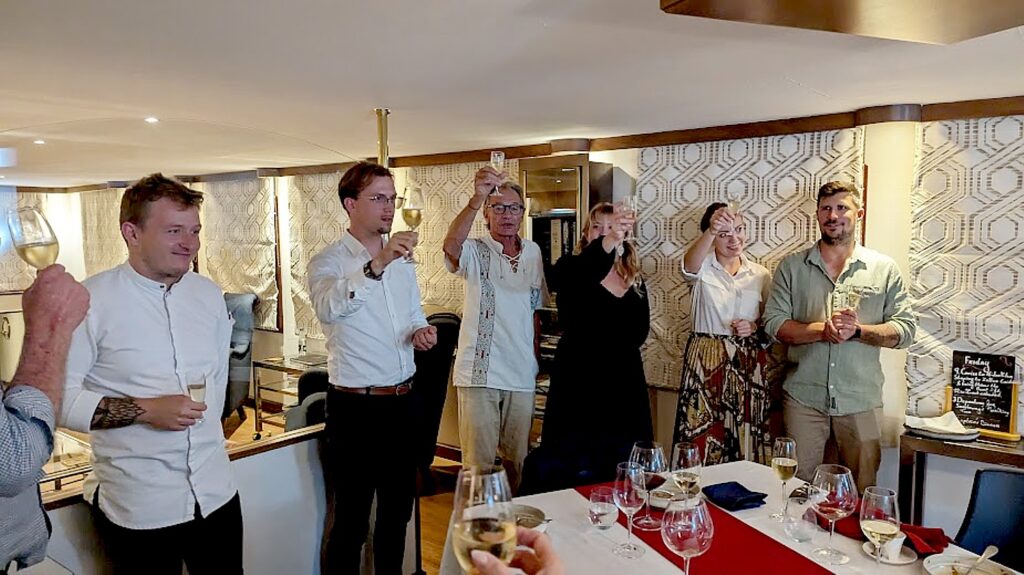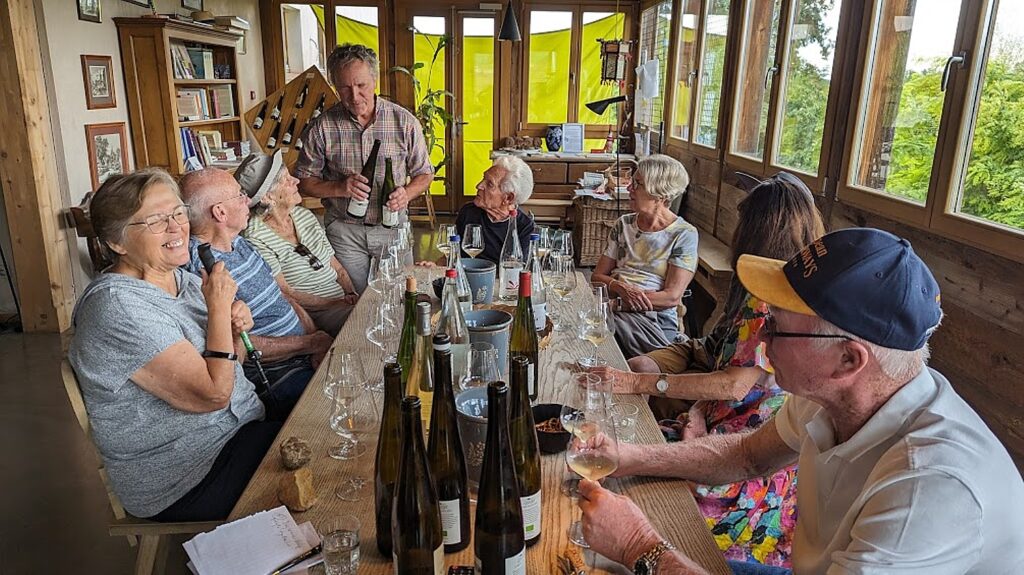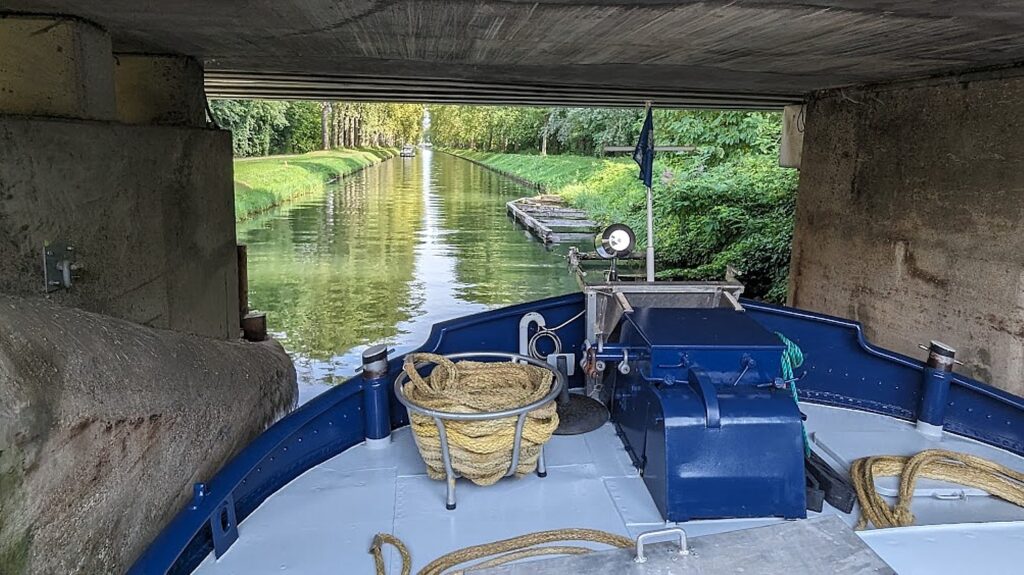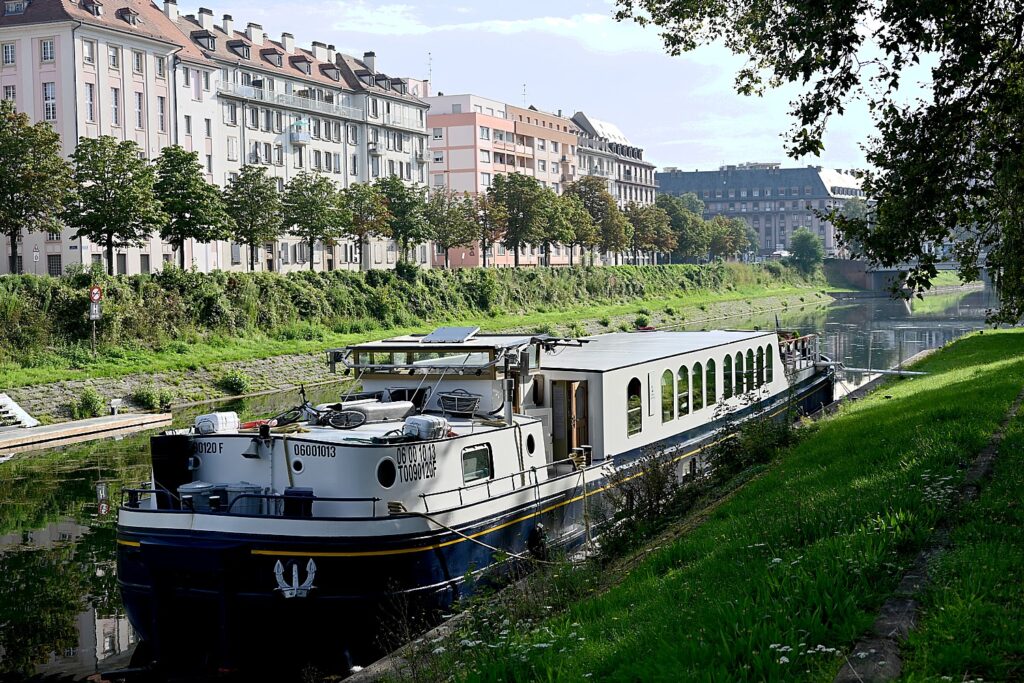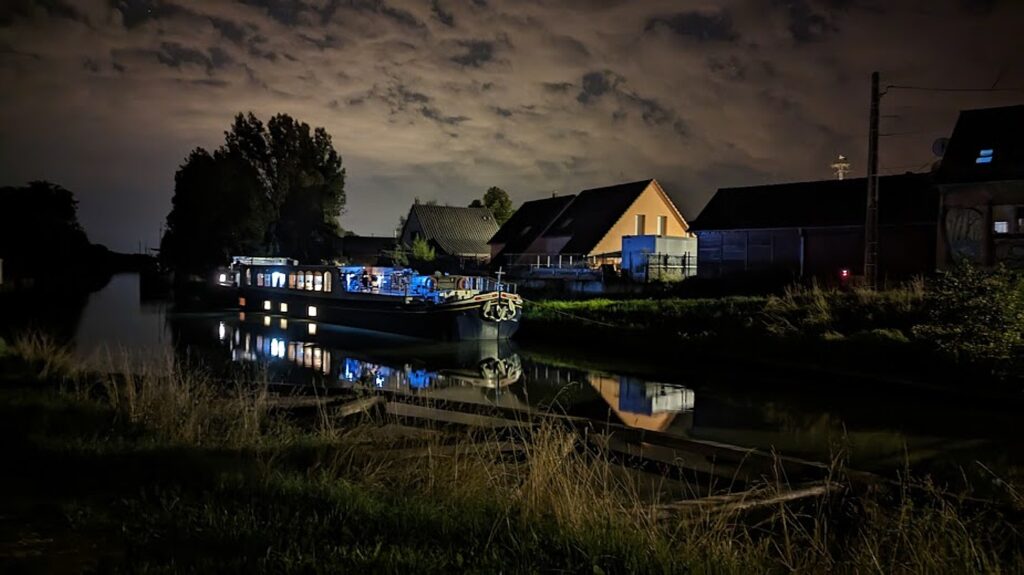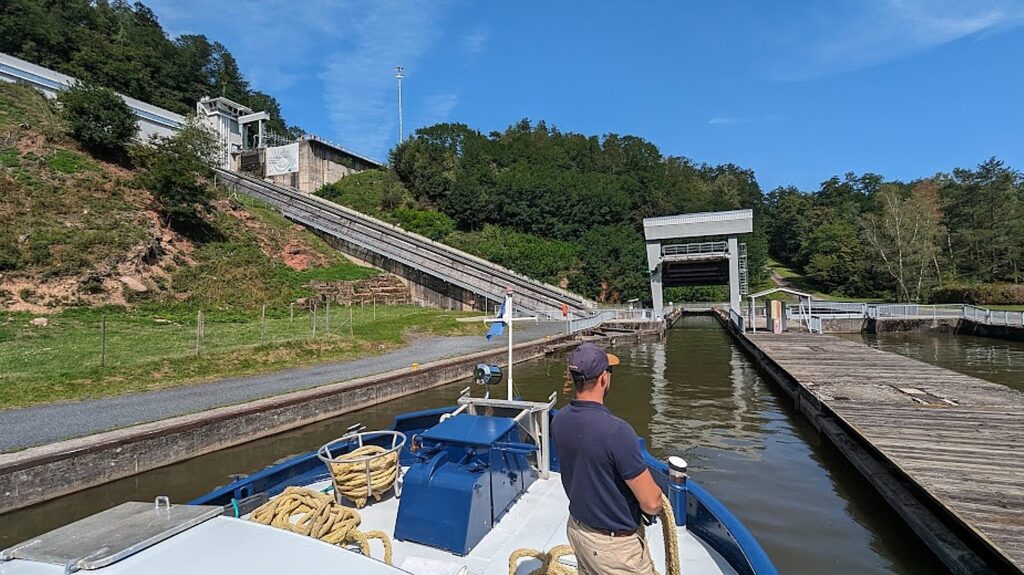
By Karen Rubin, Travel Features Syndicate, goingplacesfarandnear.com
Day 6 Lutzelbourg to Niderviller
On Day 6 our European Waterways luxury hotel barge, Panache, cruises from Lutzelbourg to Niderviller where the cruise ends, during which we experience some of the most dramatic cruising – thrilling even considering how calm and restful the slow cruising on the canal is – of the trip.
I set out on the bike along the towpath but come to a fork and am confused which way to go, so return to the Panache. It’s a good thing I did return to the boat because the bike path would have taken me away from the boat.
Indeed, the canal takes a turn and we get our first view of an astonishing sight: the Arzviller boat elevator that will carry Panache 45 meters up a mountainside in mere minutes.
Captain Brian excites us with the image of a “boat guillotine”. But before we have the experience (we have to wait our turn), we tie up and walk a short distance to Cristal Lehrer (Cristallerie Lehrer) glass-blowing factory where we get to see demonstrations of the craftsmanship involved.
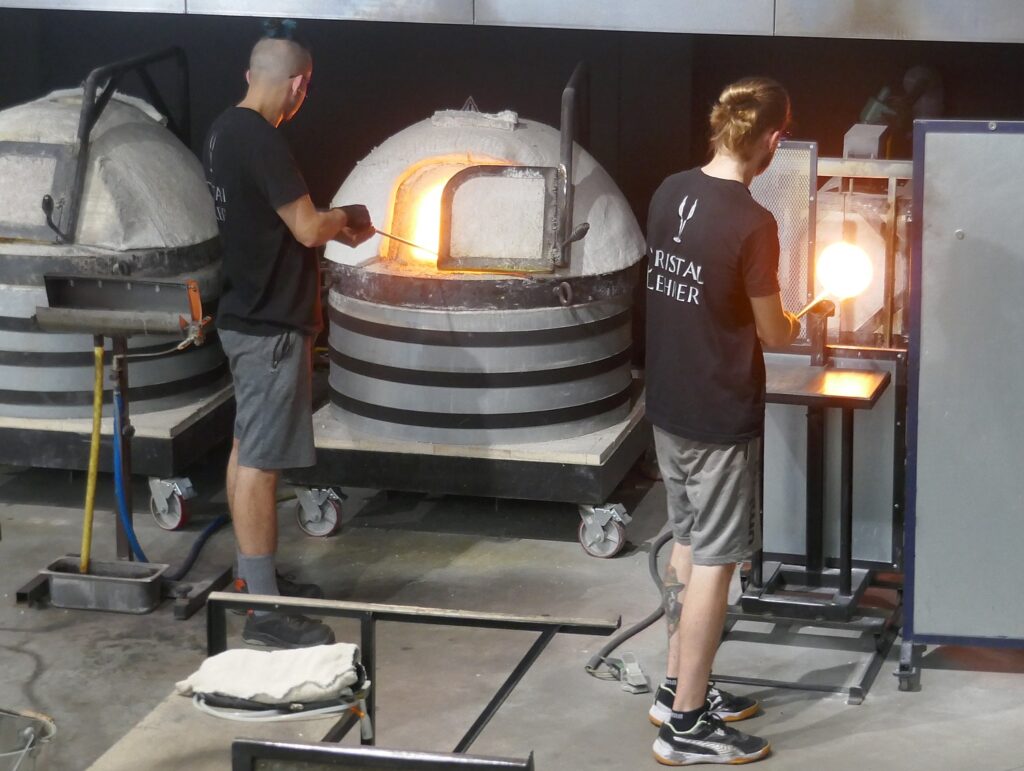
In 1920, there would have been 1500 glass workers in this area. One of the workers was Charles Lehrer. Decades later, his son, Bruno Lehrer, founded this glassworks.

We get to observe from an amphitheater as glassblowers heat the molten glass to 1700 degrees Celsius; use different oxides to create the different colors and shape them into a range of items.
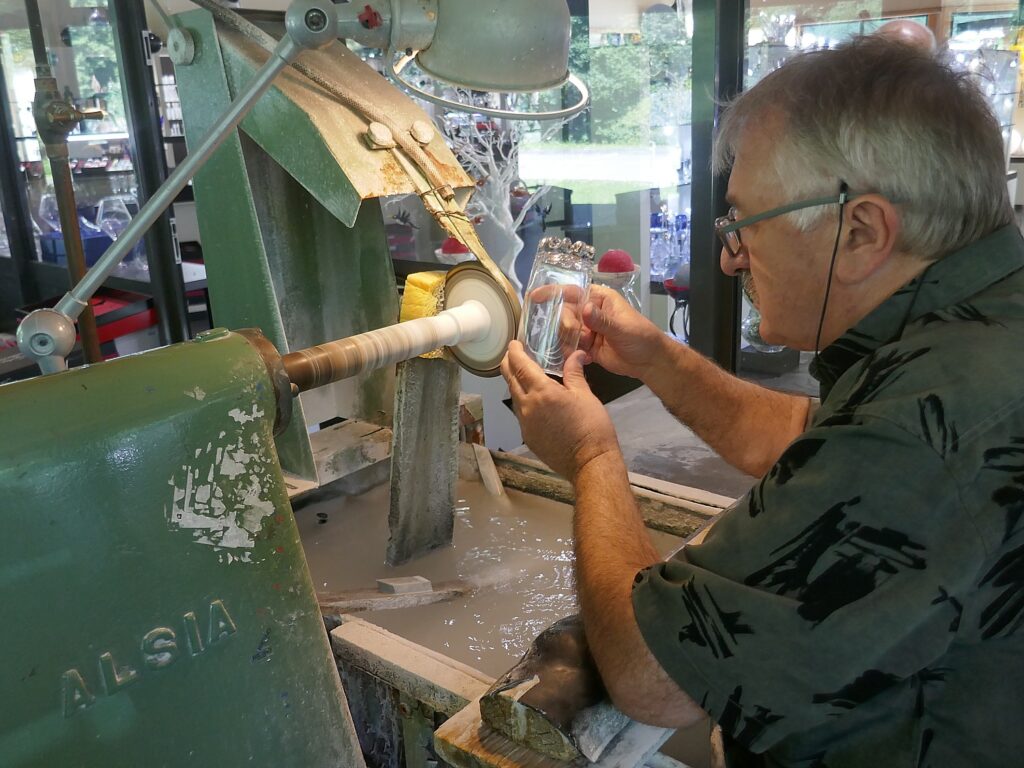
In the cutting and etching room, a craftsman named Bruno shows us how he cuts shapes into a glass, etches images like a swan or a bird, changing the wheel for a different cut and then engraves my name in the glass, which he gives me as a gift. He tells me he has worked in this factory with his father from when he was 14 years old; now 86, the master craftsman is here every day demonstrating his skill. (It occurs to me later whether this is Bruno Lehrer, himself?)
Arzviller Boat Elevator
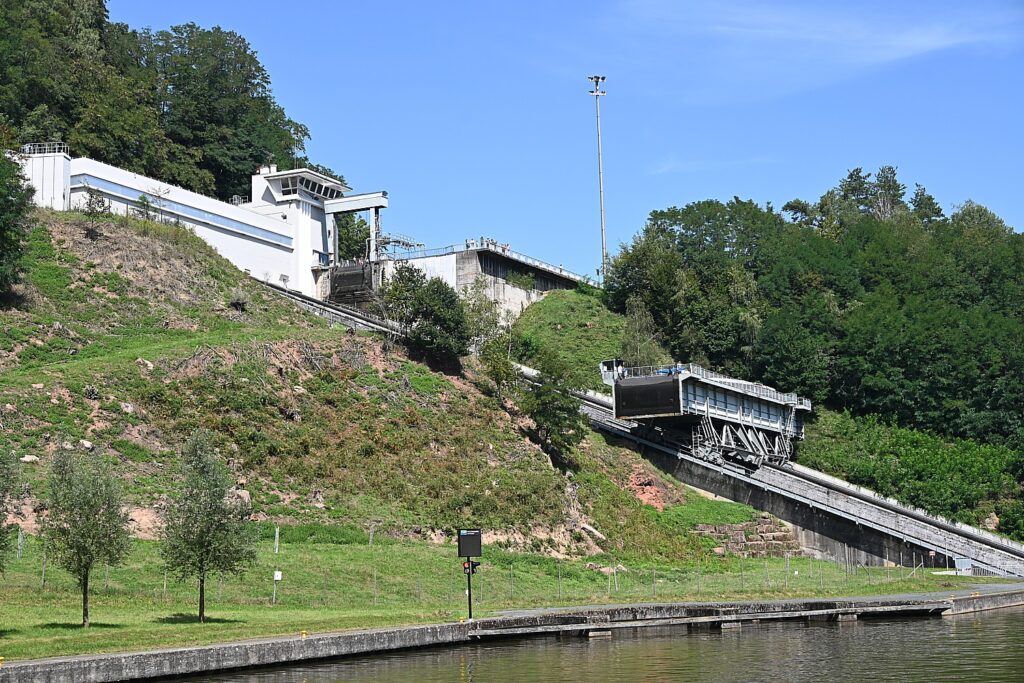
An engineering feat when it was installed in 1969, and still the only one of its kind in Europe, before the Arzviller boat elevator was constructed in 1969, it took boats an entire day to navigate the 17 locks over four kilometers to ascend the 146 feet in altitude. Before the Arzviller boat elevator, only one barge a day could pass through, but today, as many as 39 can make the trip each day.
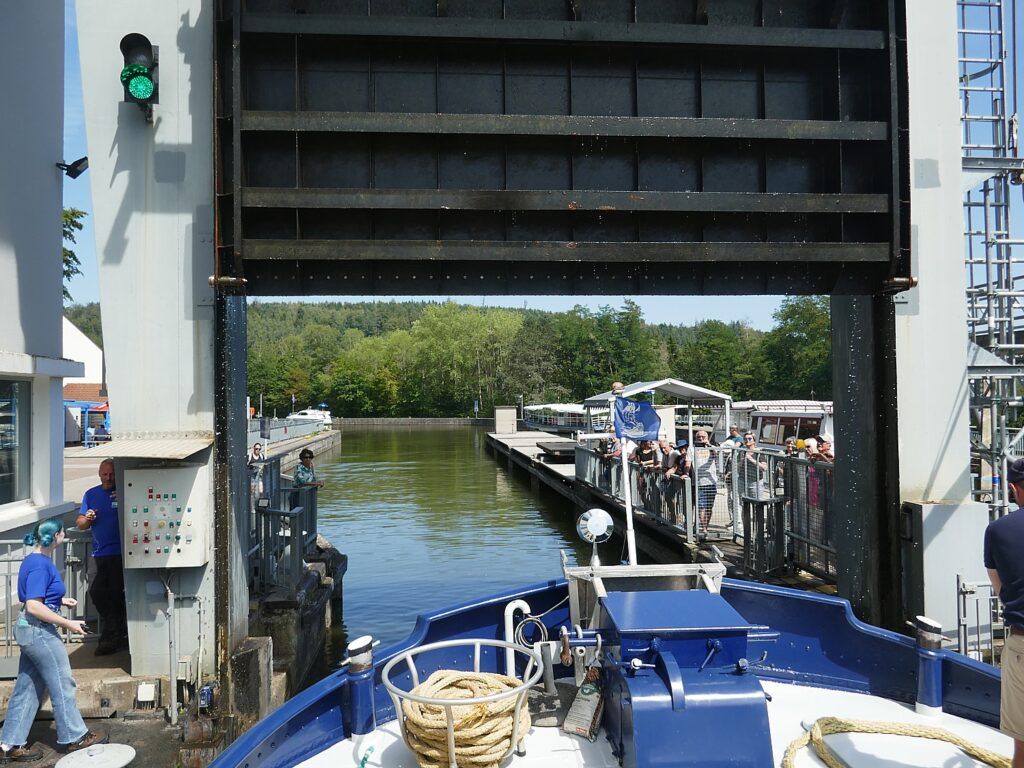
Now back on the Panache, it is our turn to go through the “boat guillotine” – really the black door that comes down to seal the carriage, like a bathtub, into which our boat floats, to be carried, like an elevator, up the hill. Two counterweights, weighing 450 tons each, powered by two winches, lift or lower barges safely up and down the hill at a 22-degree angle. It takes four minutes for us to be lifted to the top, where the door rises and we continue our journey on the Canal de la Marne au Rhin.

What an experience, but the drama isn’t over.
Coming out of the boat elevator, we cruise a bit further until we come to an enormous tunnel, just exactly the width of the boat, cut through the Vosges mountains.
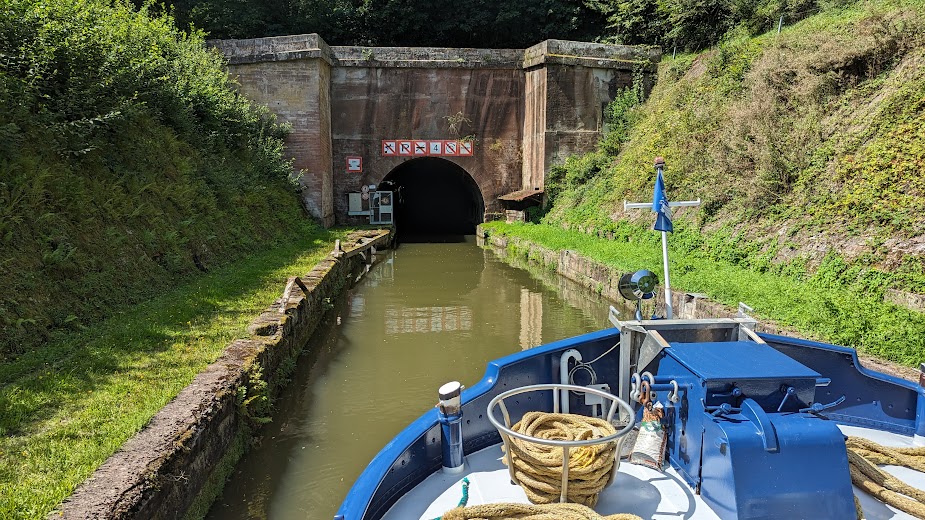
It is unbelievably exciting to go through – I don’t even go down for lunch, which is served by candlelight – until we get through the tunnel, some 30 minutes later.
But that is not all, because we will soon come to a second tunnel that takes 20 minutes to get through.
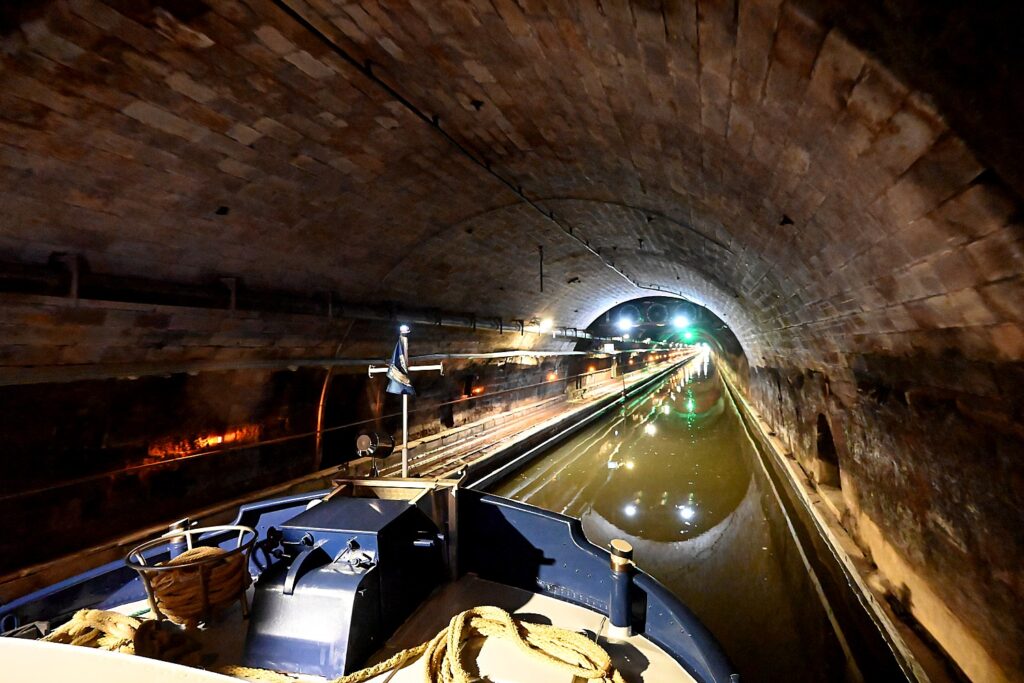
In between the tunnels, I go down for lunch which is also an event –fennel and anchovies salad; orange duck with couscous, and selection of cheese. White wine from Alsace, Gewurztramine 2020, a vegan, “vin biologique” wine “Evidence” ( named to reflect “the respect we have for biodiversity in our vineyards as “evidenced” by the return of game birds to our land, which has inspired this label”).
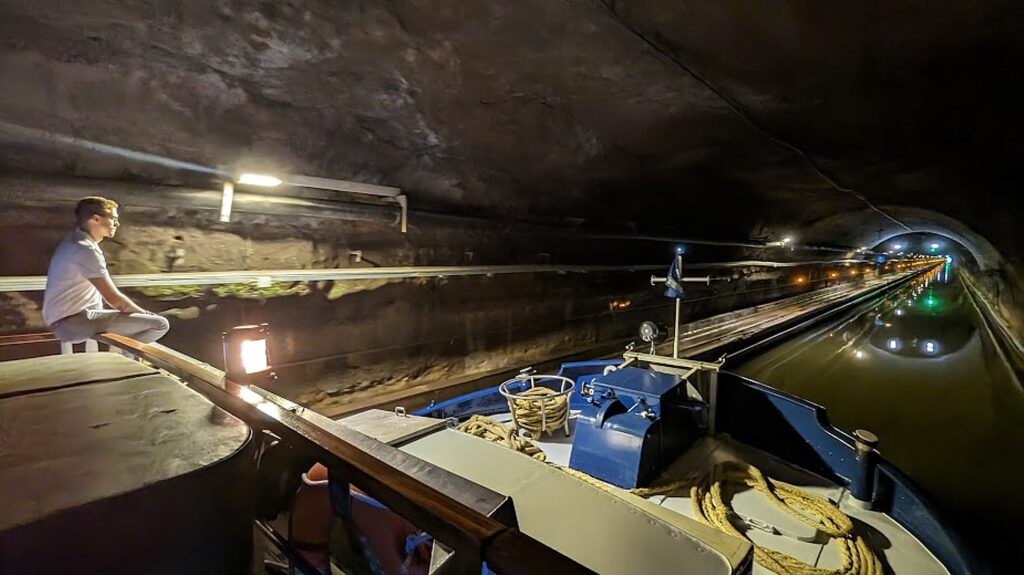
And yet, there are still more astonishments to unfold on this day, our last full day of the cruise.
We are driven to Sarrebourg, a classic, historic French town.
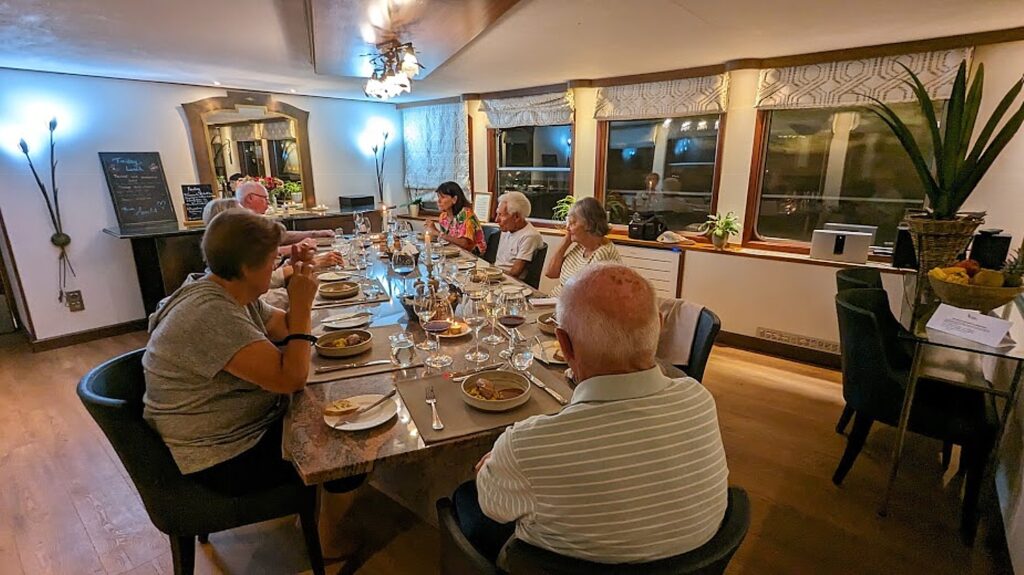
A Monumental Chagall
The astonishing highlight in Sarrebourg comes at the Chapelle des Cordeliers. Built in 1265 by Franciscans, the church was used for barracks during the French Revolution; in 1870, during the German Annexation, the church was used for worship for German soldiers. From 1927, the History and Archaeology Society converted the chapel to a museum. But by 1970, the building, near ruin, was demolished, leaving only the choir of the chapel and an open space where a wall should have stood.
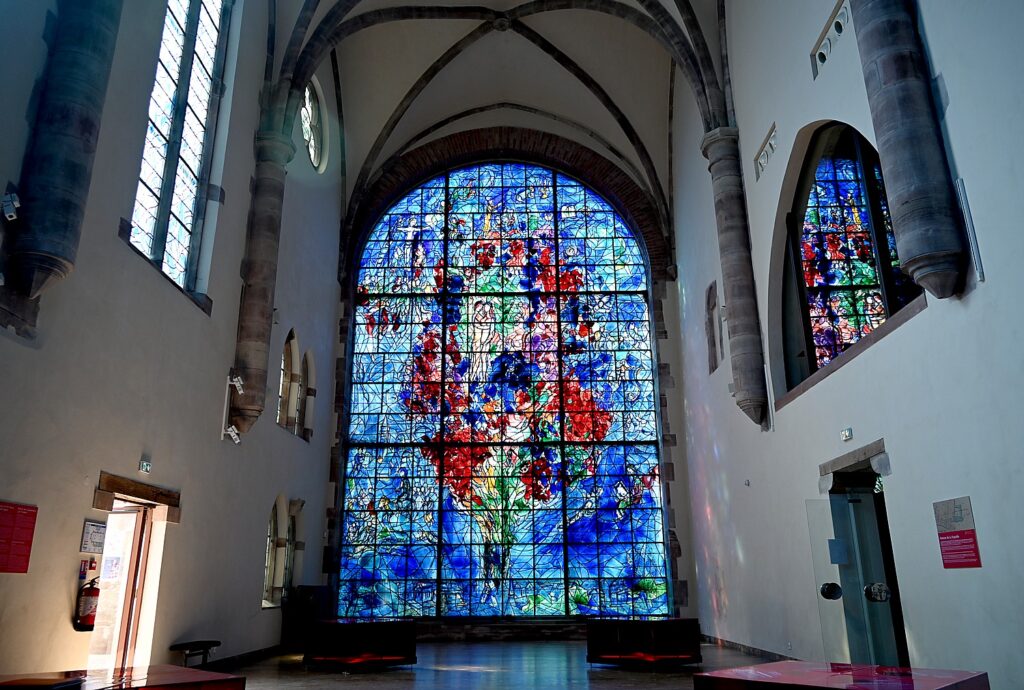
The Mayor of Sarrebourg at the time, Pierre Messmer, a former Prime Minister of France, entreated his friend, the world-famous artist Marc Chagall to create stained glass windows that would close the empty space. Chagall agreed to do it as a gift to the town. It took Chagall six months, from December 1973-Febuary 1974, to produce a series of six sketches for what became his largest stained glass window, 12 meters high by 7 ½ meters wide.
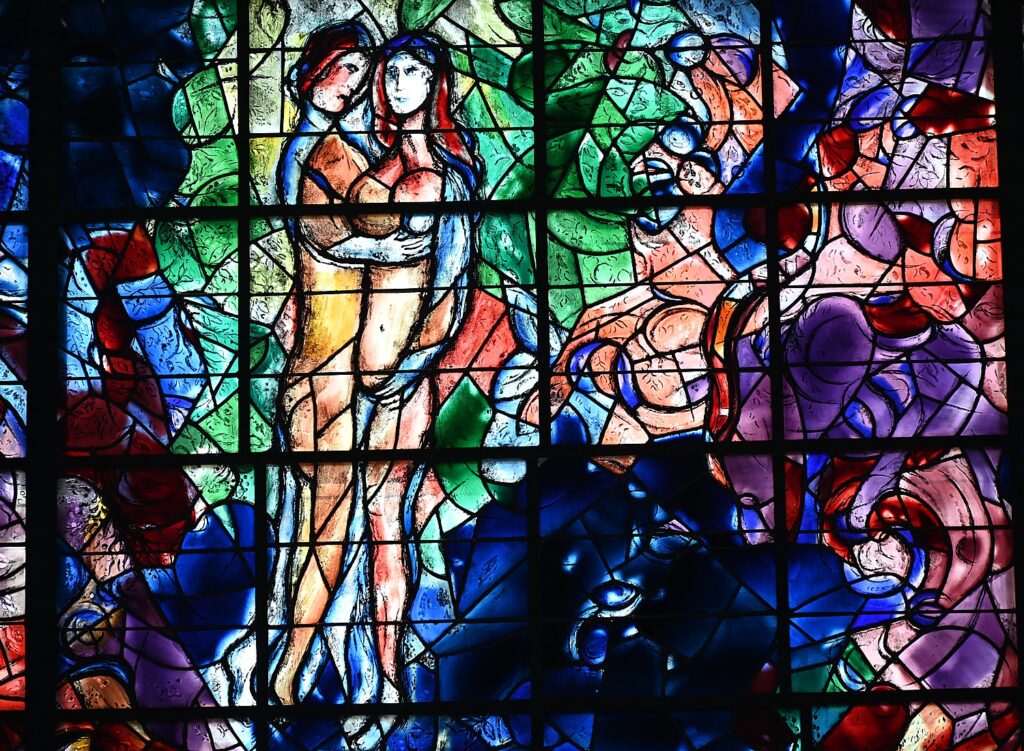
Messner had asked Marc Chagall for Sarrebourg to be featured. Chagall, who had never been to Sarrebourg, had planned to visit in the summer of 1974, but he was not well enough to travel, so relied on photographs. It took two more years (1974-6) for master glassmaker Charles Marq to create it in the Simon de Reims workshop, where Chagall had all his stained glass projects produced. “There is all the genius of Chagall – the monumental dimension, the light and the transparency of the final realization,” the notes say.
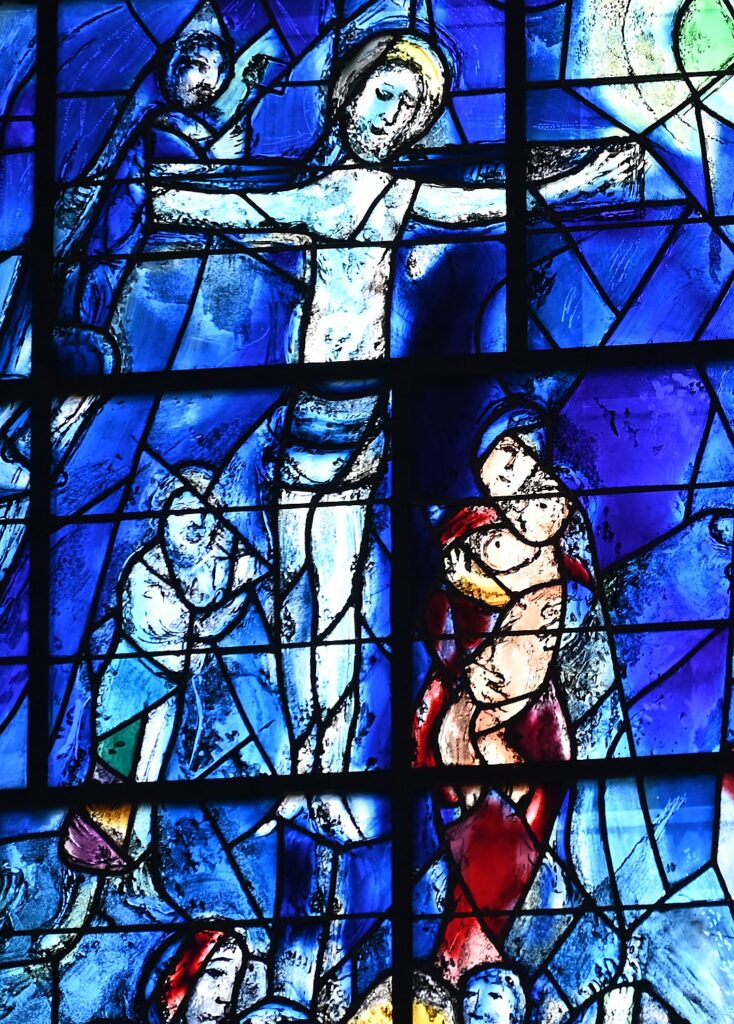
Chagall died in 1985 at the age of 98 after creating one more stained glass work, but never saw “The Peace” installed. (https://www.sarrebourg.fr/parcours-chagall/chapelle-des-cordeliers/)
“For me a stained glass window is a transparent partition between my heart and the heart of the world. Stained glass has to be serious and passionate. It is something elevating and exhilarating. It has to live through the perception of light,” Chagall wrote.

La Paix (“The Peace”) puts Adam and Eve in the Garden of Eden at the center, surrounded by a multitude of Biblical and religious symbols and subjects, as well as secular images that give a nod to the Alsace-Lorraine, our guide, Philippe Zugmeyer, explains, showing us Chagall’s sketches which we can compare to the finished work. “The face of Eve is very bright, white, brightest image. They are smiling, showing love. Look closely and you will see the face of girl from Lorraine – identified by the regional headdress she wears.”

He points us to the Prophet Isaiah in green, an important symbol for Chagall of reconciliation of all creatures. There are the lamb, cow, bear, snake, lion. There is King David with a harp. Jacob’s ladder. Jesus on a donkey heralded by people smiling and cheering. Jesus giving his Sermon on the Mount. Jesus on the cross. There is a baby to symbolize maternity (not nativity, he notes). Moses with two beams of light emitting from his head.
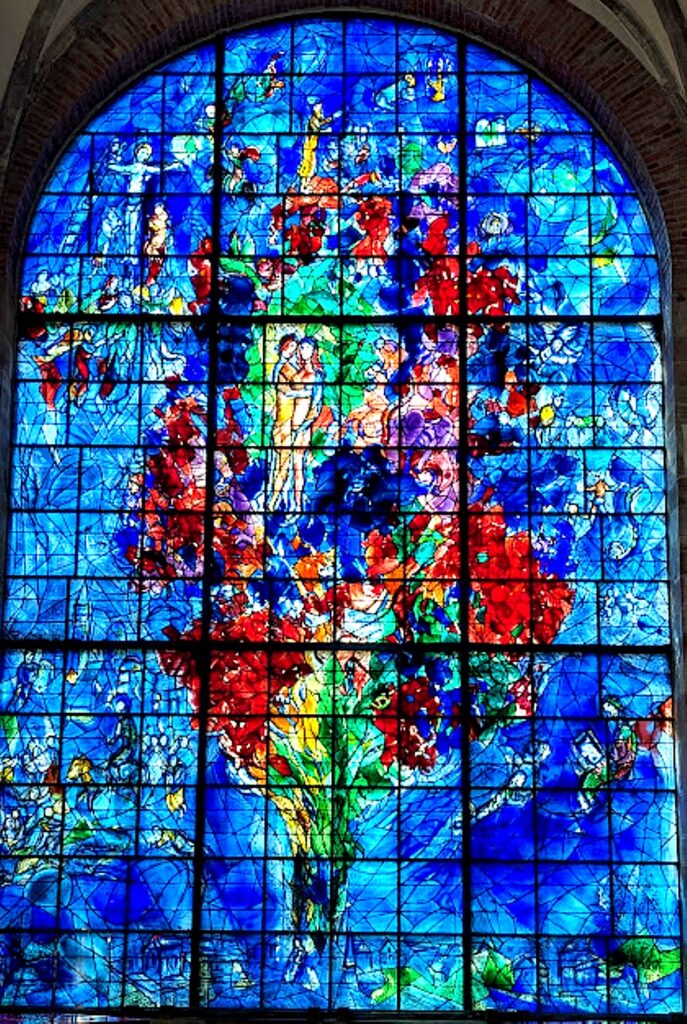
“This is not a religious lesson, it is profane [secular],” he tells us. “It is about the region. Peace and reconciliation.” But he adds, “There is a lot we can’t explain – it is up to you to find your own meaning in the Chagall. What is clear is that Chagall intended to bring unity – peace. There are Old Testament and New Testament themes, symbols and imagery.”
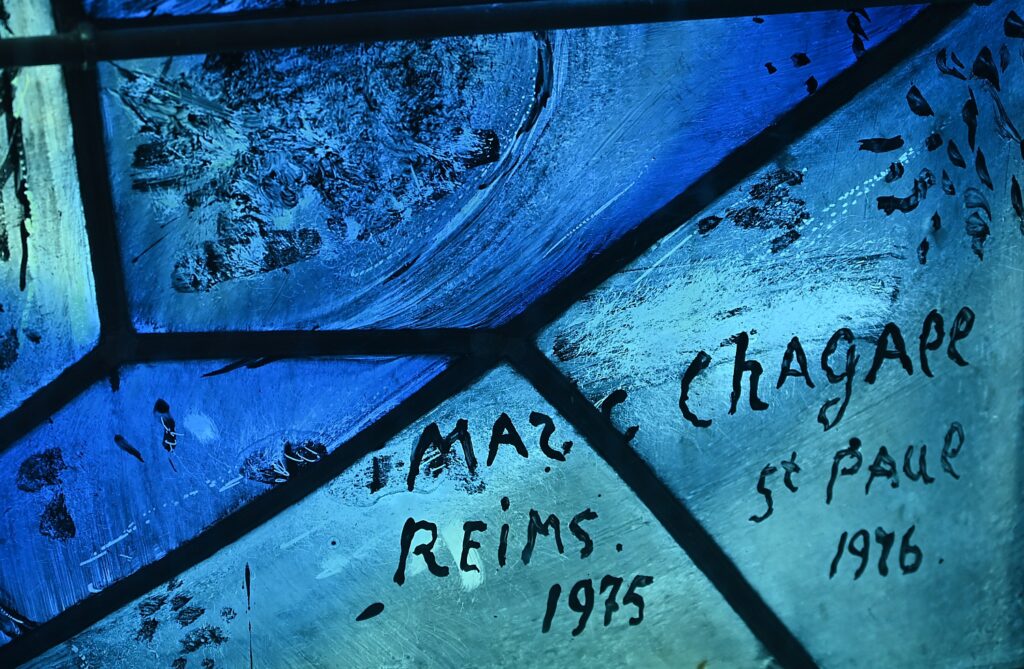
In addition to “The Peace,” the stained glass windows on the side walls were also designed by Marc Chagall.
I never expected to see anything like this on this day.
From here we walk a short distance to the affiliated Musée du pays de Sarrebourg (Museum of Sarrebourg and its surroundings). Created in 1905, it was originally only an archaeological museum. Today, it is a modern building that includes a space dedicated to Marc Chagall, tapestries and an exhibition of earthenware and porcelain from the Niderviller manufacture and Roman artifacts.

We see the tapestries created by Yvette Cauquil-Prince (1928 –2005), a Belgian-born weaver and master craftswoman who reproduced the works of renowned 20th century artists including Pablo Picasso, Max Ernst, Paul Klee, Wassily Kandinsky, Alexander Calder. But she is best known for her association with Chagall, producing over 40 tapestries of his works with meticulous, even impossible detail, several which we see here.
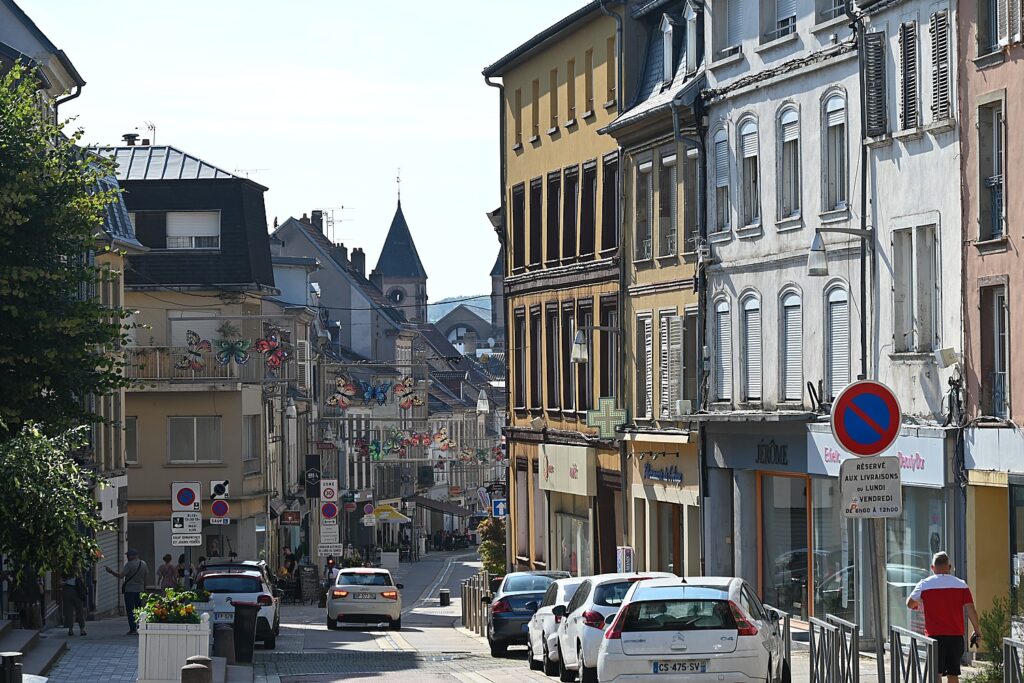
Gala Captain’s Dinner
This is our last evening aboard The Panache and while each meal has been the ultimate in fine dining, tonight’s Captain’s Dinner when Captain Brian heads the table, has the feeling of a gala with formal table setting – white tablecloth, red cloth napkins, candlelight.

The meal features peas and wasabi tartlet; Jerusalem artichoke; lobster tail piquillos; chocolate with truffle; cheese selection. The wine is Chablis Grand Cru Les Blanchots (2018) from Albert Bichot, founded in 1831and still family-owned, and a Pino Noir Grand Cru from Burgundy (2014).
“This wine is like walking in forest after rain- grapes come from plot of soil at bottom of hill in Burgundy,” says Brian, who comes from Burgundy. “Grown in the forest, the grapes are half protected from the morning sun. Less sun, less sugar, less alcohol. The forest brings moisture, humidity – freshness. It’s very fresh – the flavor of rose, forest flavors, then red berries, an oak barrel and voila.

Captain Brian, who chose tonight’s cheeses, regales us with the back stories: Comte, a favorite of cow’s milk cheese from Franche-Comte, he says, “is a treasure. This is a tiny piece of huge wheel. To make it, you need the milk from 30 cows’ full day production.
The second cheese, Valencay, a hard goat cheese from the Loire, has a fabulous story: after his disastrous campaign in Egypt, Napoleon visited the town of Valençay and was treated to this renowned cheese. For Bonaparte, the shape of the cheese – a pyramid – reminded him of his recent defeat so he furiously drew his sword and in one stroke cut off the top.
Third is Roquefort, the best blue cheese, bred where the mold comes to the cheese (instead of injected). “Legend has it that a shepherd boy left his lunch in a cave, but returned some time later to find the moldy cheese. He tried it.– don’t ask me why, he’s very French – and instead of getting sick or being poisoned, found the cheese delicious. That’s how Roquefort was discovered.” (Interesting anecdote I discover: Before penicillin was discovered, many people in France simply rubbed Penicillium roqueforti on their wounds to prevent bacterial infection.)
In the course of our six-day cruise, I calculate we sampled 36 cheeses –about half of all the controlled French cheeses – and 40 wines.
We see gorgeous scenery, to be sure, but the barge experience is about doing, being present, the camaraderie. And so there are sentimental farewells when we depart – the seven days we have spent together feeling like a long time and as no time at all.
“Travel makes the world feel big and small at the same time.” “Travel is the elixir of youth.”
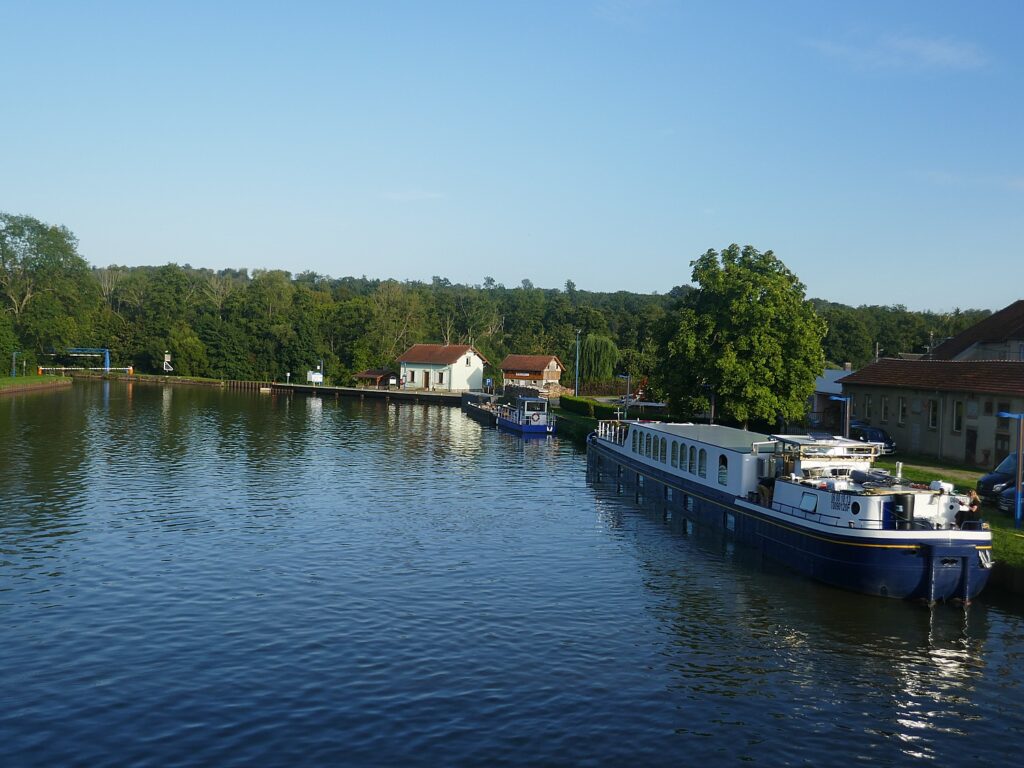
The next morning, we are driven back to Strasbourg – 45 minutes to cover the distance we have traveled in six days cruising (and biking). I have enough time to continue to explore Strasbourg before I take the TGV train to Paris.
The Panache does this Alsace-Lorraine cruise on the Canal de la Marne au Rhin in both directions, but I was thrilled going the way we went, from Strasbourg to Niderviller because there is a constant build up of excitement, starting with floating through that stunning alee as we sail into Strasbourg, and climaxed by going up the incline (in this direction) and through the two tunnels, with the Marc Chagall on the last day.
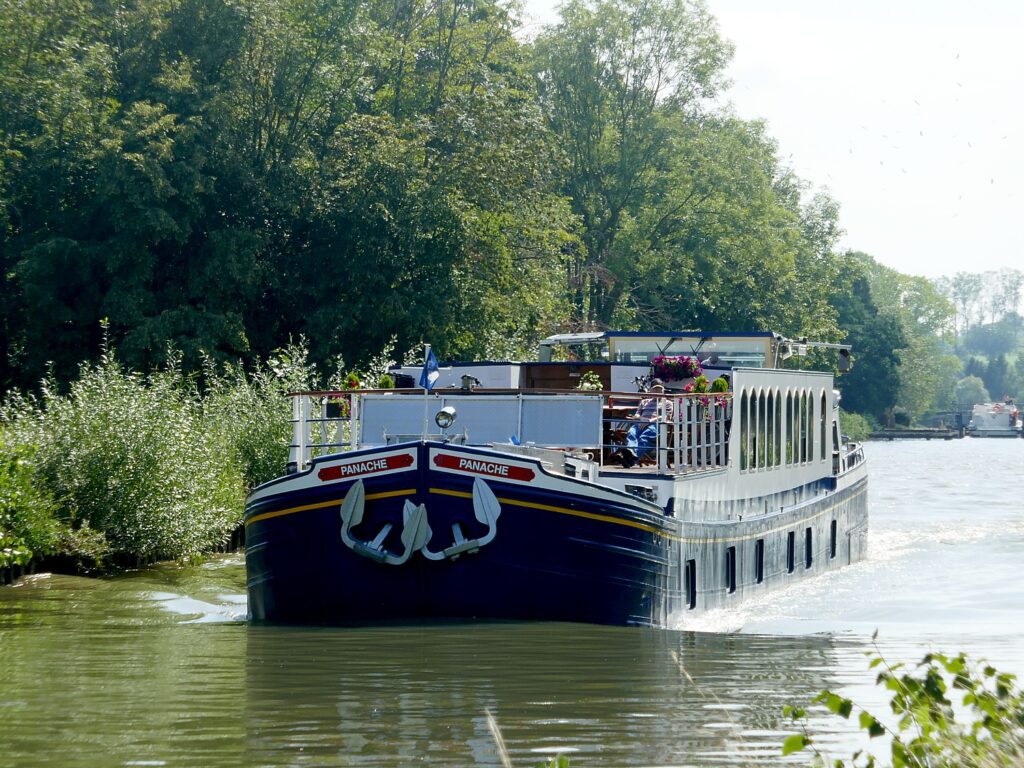
The 12-passenger luxury hotel barge Panache cruises the Alsace & Lorraine in summer and autumn; Holland in the Spring, when the flowers are in full bloom, and Champagne in May & June (Champagne itineraries typically include Brie cheese tastings, a tour of the Cathedral at Reims, Epernay and of course, tastings at renowned champagne houses).
This year, European Waterways celebrates its 50th anniversary of its founding by Derek Banks and John Wood-Dow, who helped pioneer the concept of hotel barging and itineraries that focused on culture, history, fine wine and gourmet cuisine. Among the first to operate on the Canal du Midi, their efforts helped spur a new niche travel industry that proved instrumental in the revitalization of Europe’s intricate network of scenic canals and inland waterways as tourism destinations – giving new life to villages and communities that had depended upon the canals that no longer carried commercial cargo.
With a 6-to-20 guest capacity and 1:2 crew ratio, European Waterways is able to provide lavish on-board service and can transport their guests on the narrower, more intimate inland waterways that are inaccessible to larger vessels. This fascinating network of smaller canals allows for flexibility, spontaneity and ample opportunity to hop off and explore by bicycle or on foot, in addition to walking tours of communities and daily, chauffeured excursions “off the beaten path” to experience wine tastings and private visits of stately homes.
One of the largest providers of all-inclusive luxury hotel barging in Europe, European Waterways is launching its newest, ultra deluxe vessel, the eight-passenger Kir Royale. Debuting in France’s Champagne region in May 2024, the vessel features major upgrades that include a more spacious layout with modern furnishings, three sundecks and a spa pool, an upper observation deck with a panoramic view, and four air-conditioned cabins with en suite bathrooms.
Kir Royale will cruise the River Marne and Canal latéral à la Marne, offering six-night all-inclusive sailings with exclusive excursions to some of the region’s legendary Champagne houses such as Moët & Chandon. Guests will also be treated to immersive experiences such as lunch at the boutique Grand Cru Champagne house of Frerejean Frères, and on-board gastronomic meals with wine pairings served by the vessel’s own master chef.
Kir Royal will cruise Champagne from May through October. It joins European Waterways’ 12-passenger Panache, which cruises between Château-Thierry and Châlons-en-Champagne from mid-May to late-June. Both vessels provide private transfers from a designated location in central Paris. Reservations are now open, with rates starting at $8,550 per person, based on double occupancy. Whole boat charters are also available.
Contact European Waterways, 877-879-8808, www.europeanwaterways.com.
See also:
EUROPEAN WATERWAYS’ PANACHE HOTEL BARGE CRUISES FRANCE’S ALSACE-LORRAINE CANALS IN LUXURY
EUROPEAN WATERWAYS ALSATIAN CANAL CRUISE: MYSTERY OF THE NECKLACE IN SAVERNE, LALIQUE IN LUTZELBOURG
_______________________
© 2024 Travel Features Syndicate, a division of Workstyles, Inc. All rights reserved. Visit goingplacesfarandnear.com and travelwritersmagazine.com/TravelFeaturesSyndicate/. Blogging at goingplacesnearandfar.wordpress.com and moralcompasstravel.info. Visit instagram.com/going_places_far_and_near and instagram.com/bigbackpacktraveler/ Send comments or questions to FamTravLtr@aol.com. Tweet @TravelFeatures. ‘Like’ us at facebook.com/NewsPhotoFeatures
